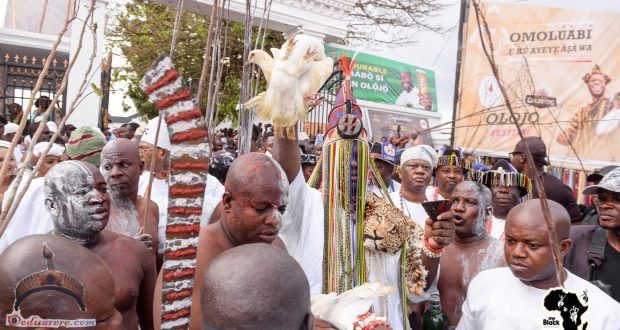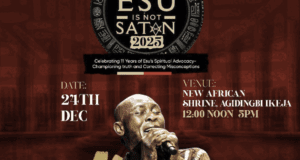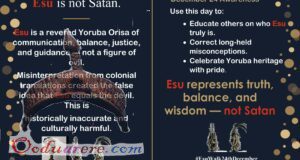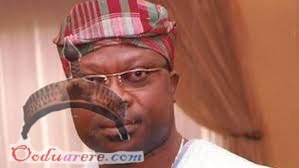Ọdún Ọlọjọ tí ọdún 2022 ni Ilu Ile-Ifẹ. A ṣe Ọlọjọ a ké gbajure ooo!!!
A Dedication To The Worship Of Ogun-the Yoruba God Of Iron In Remembrance Of The Descent Of Oduduwa, The Progenitor Of Yoruba Race
Historically woven around Ogun the Oduduwa(Yoruba) Orisa of iron widely believed to be the leader and the most important of the 201 ‘Orisa’ (elders) that accompanied Oduduwa the progenitor of the Yoruba race during his descent from the heavens, the annual Olojo Festival is the biggest and most important celebrations on the Ife cultural calendar.
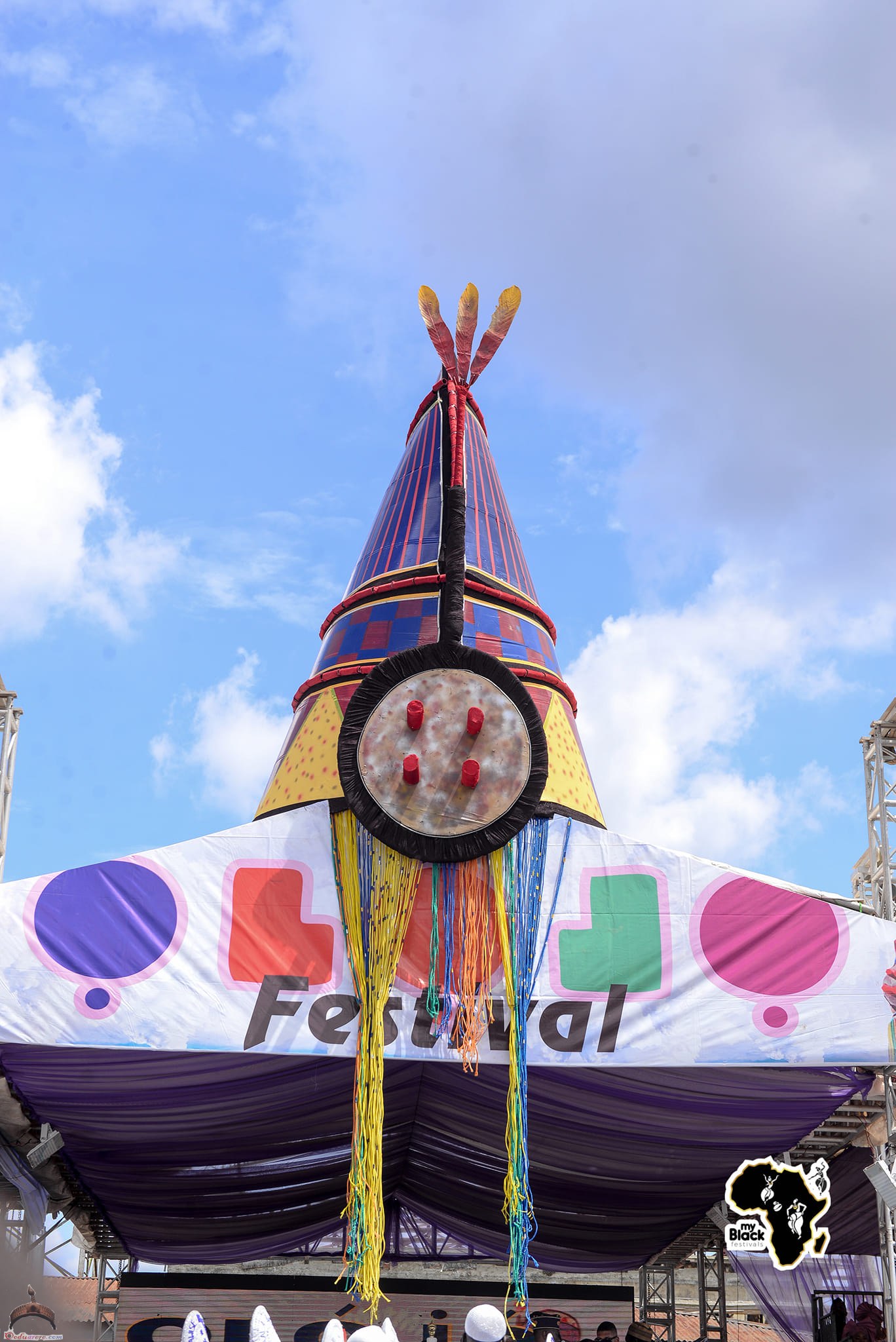

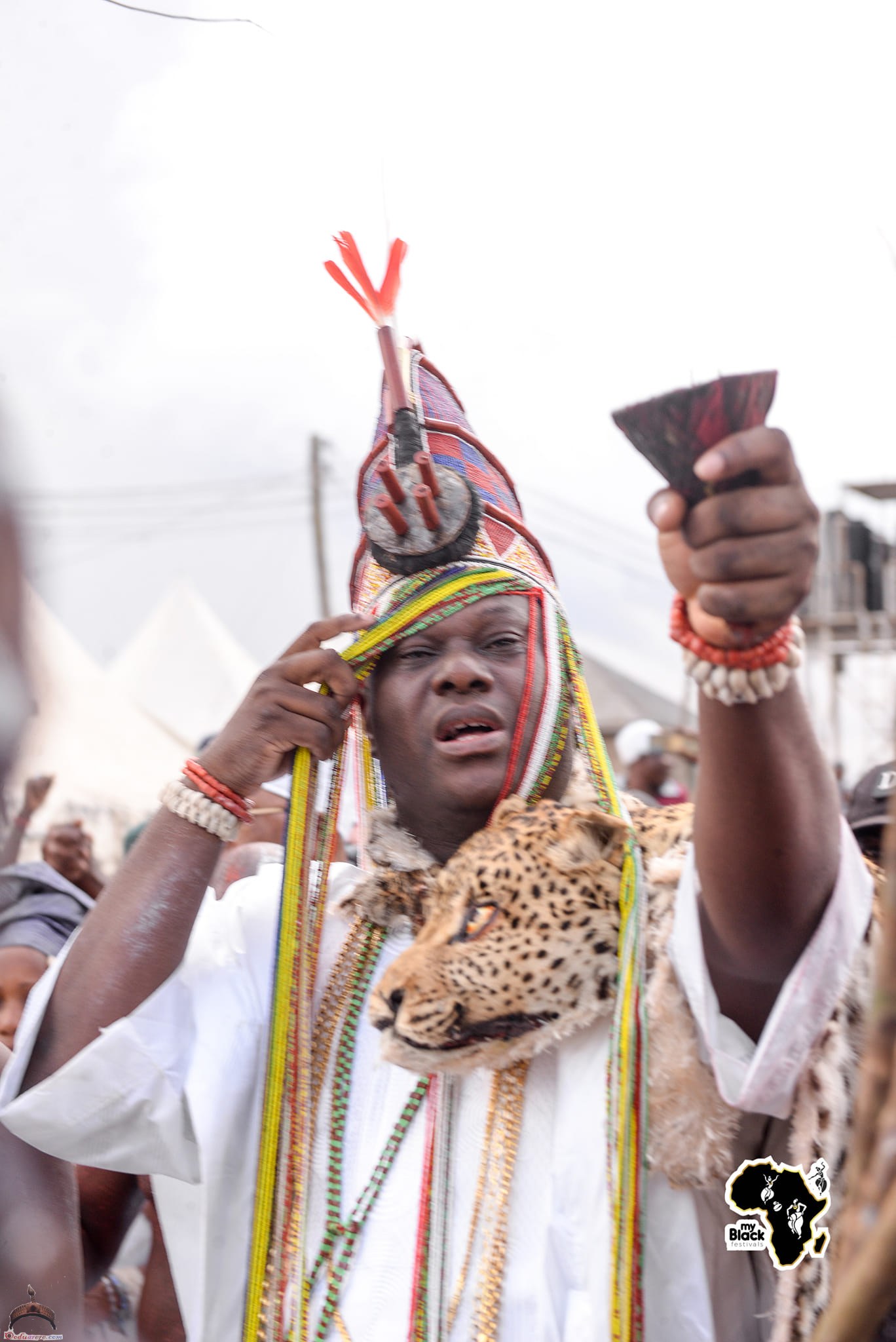
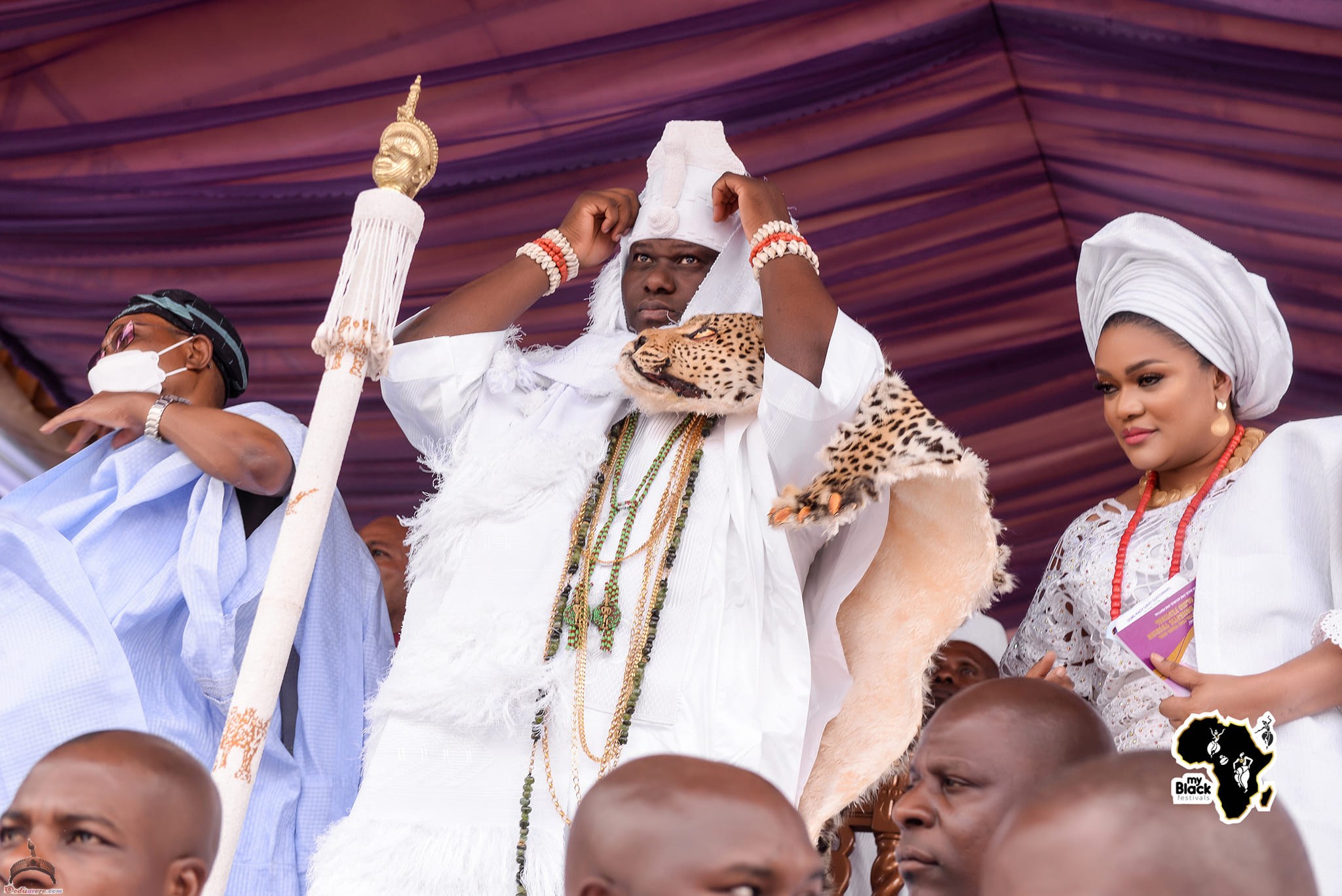

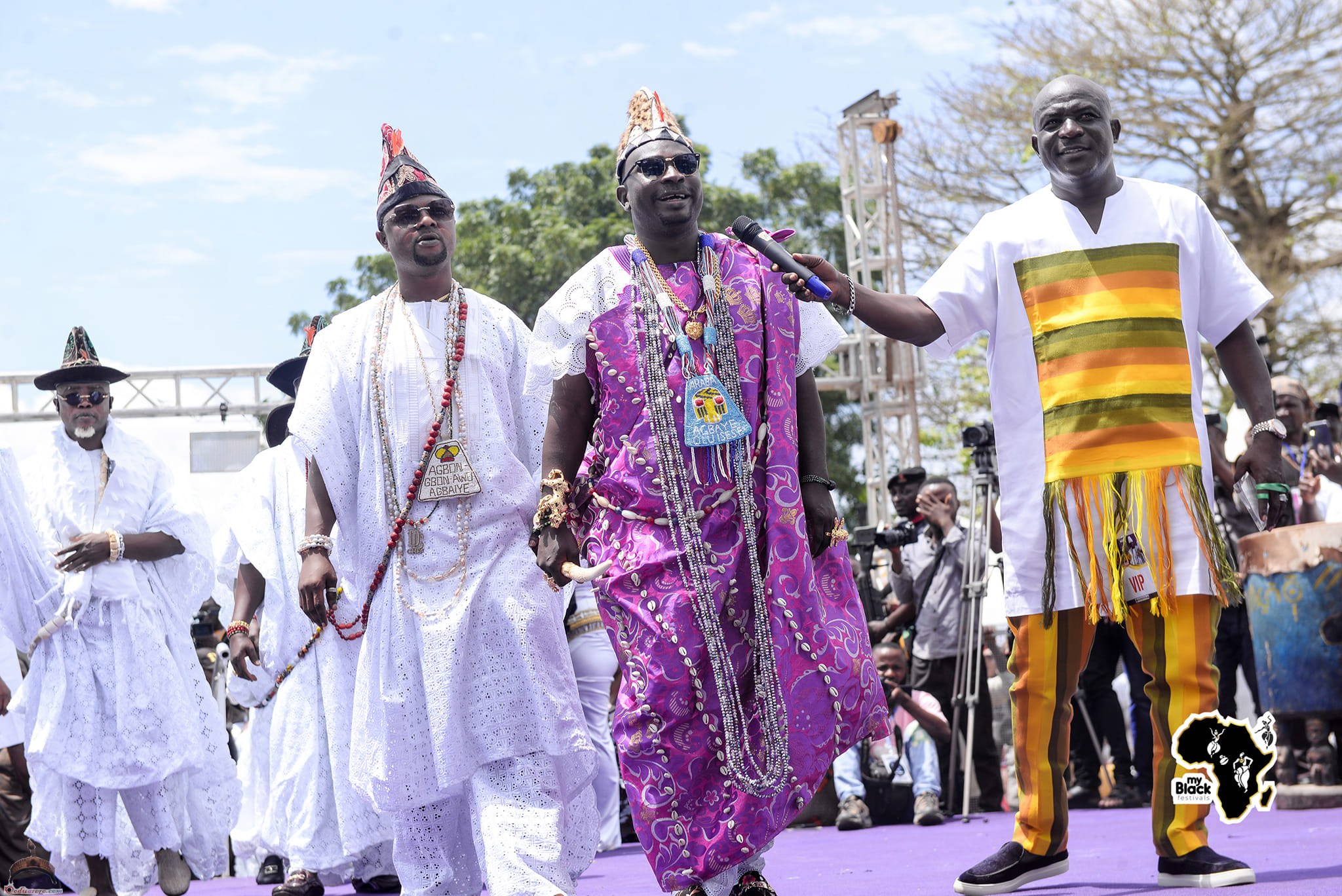
It is the performance of a series of cultural and traditional ceremonies in salutation to the gods in remembrance of the descent of Oduduwa and the 201 ‘Orisa’ to “Ile-Ife” (the land spreads) the Source, ‘Holy City’ and cradle of the Yoruba race.
Olojo Festival is unique. As a festival of all, the period of its celebrations has to be dedicated to the annual ritual movement of the sun from the West to the East of that circle over the ‘Orun’ of Oduduwa (the sacred stone slab of Oduduwa) whose movement the priests of Ife have to observe to put in place the three days festival.
Ife oral tradition stipulates that in arriving at a date for the Olojo Festival, a meeting is scheduled for the ‘Ile-Ire’ at the Ile Oodua (Ooni’s) palace in August. There Chief Eredumi and Chief Apata meet the Oogun group of ‘Emese’ (palace messengers) of the Ooni who on behalf of the Monarch bring the traditional ritual items for the fixing of the date of the Olojo Festival. These include; one bottle of Schnapps (hot drink), Kola nuts, and ‘Itan Ekiri’ thigh of grass cutter.
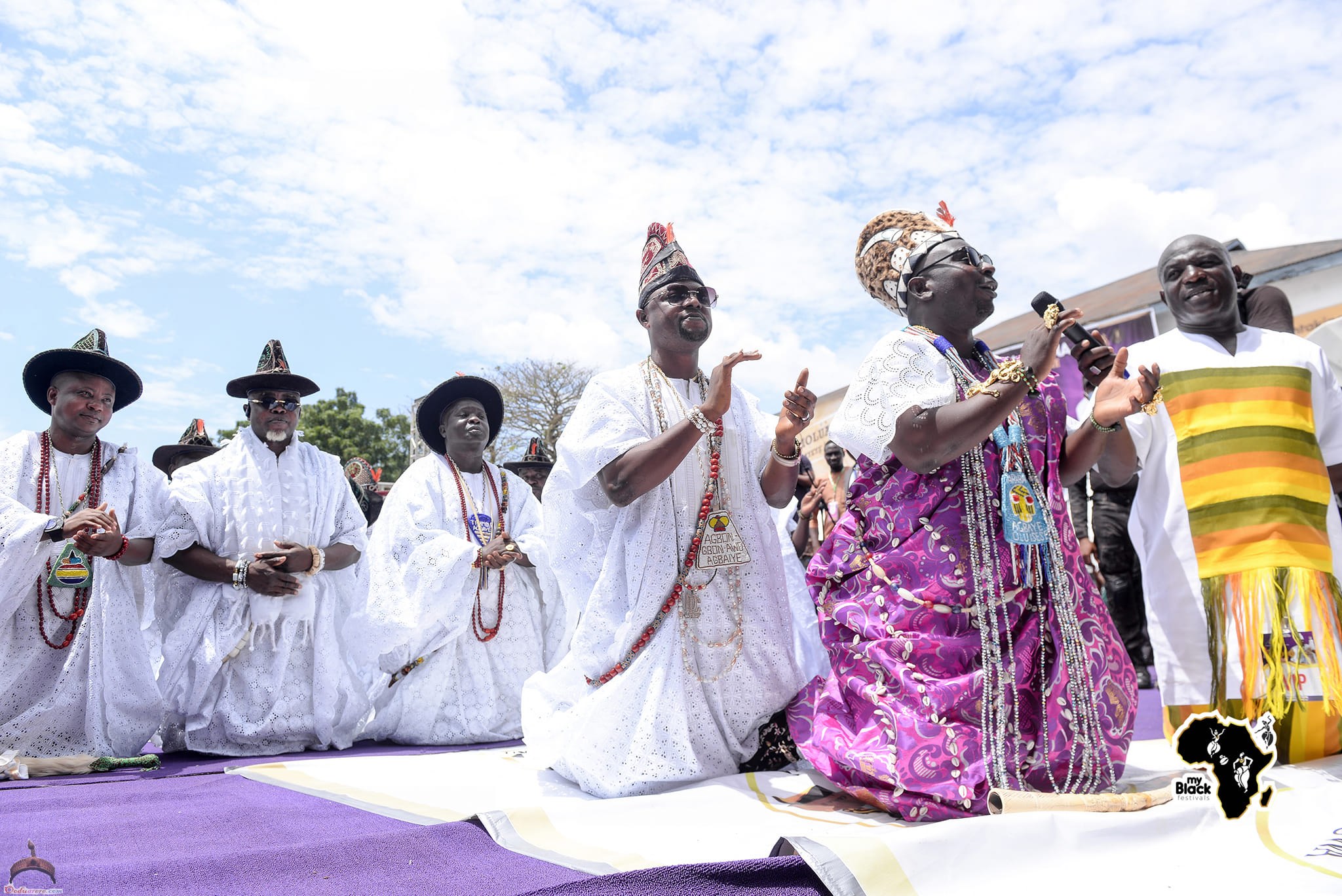
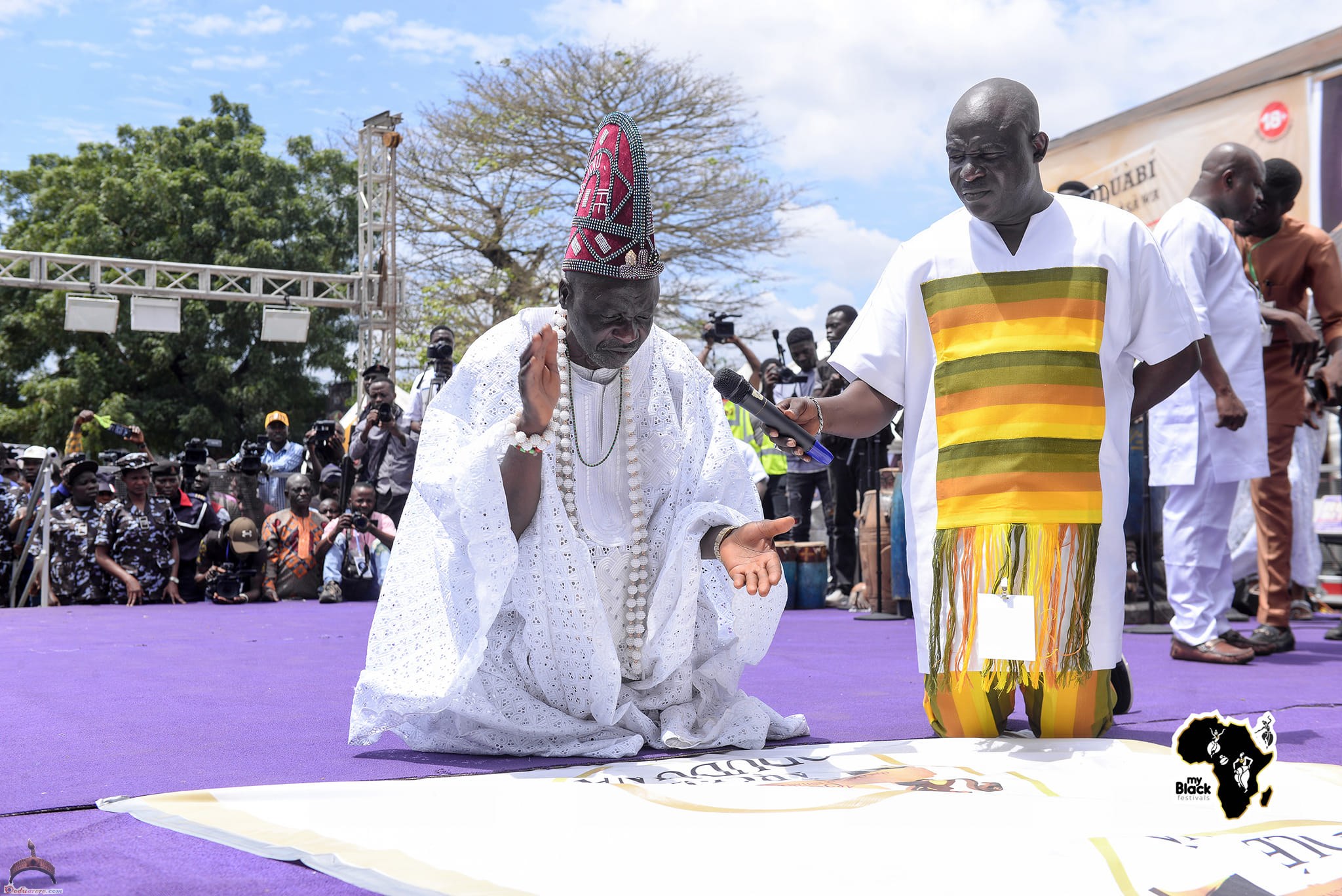
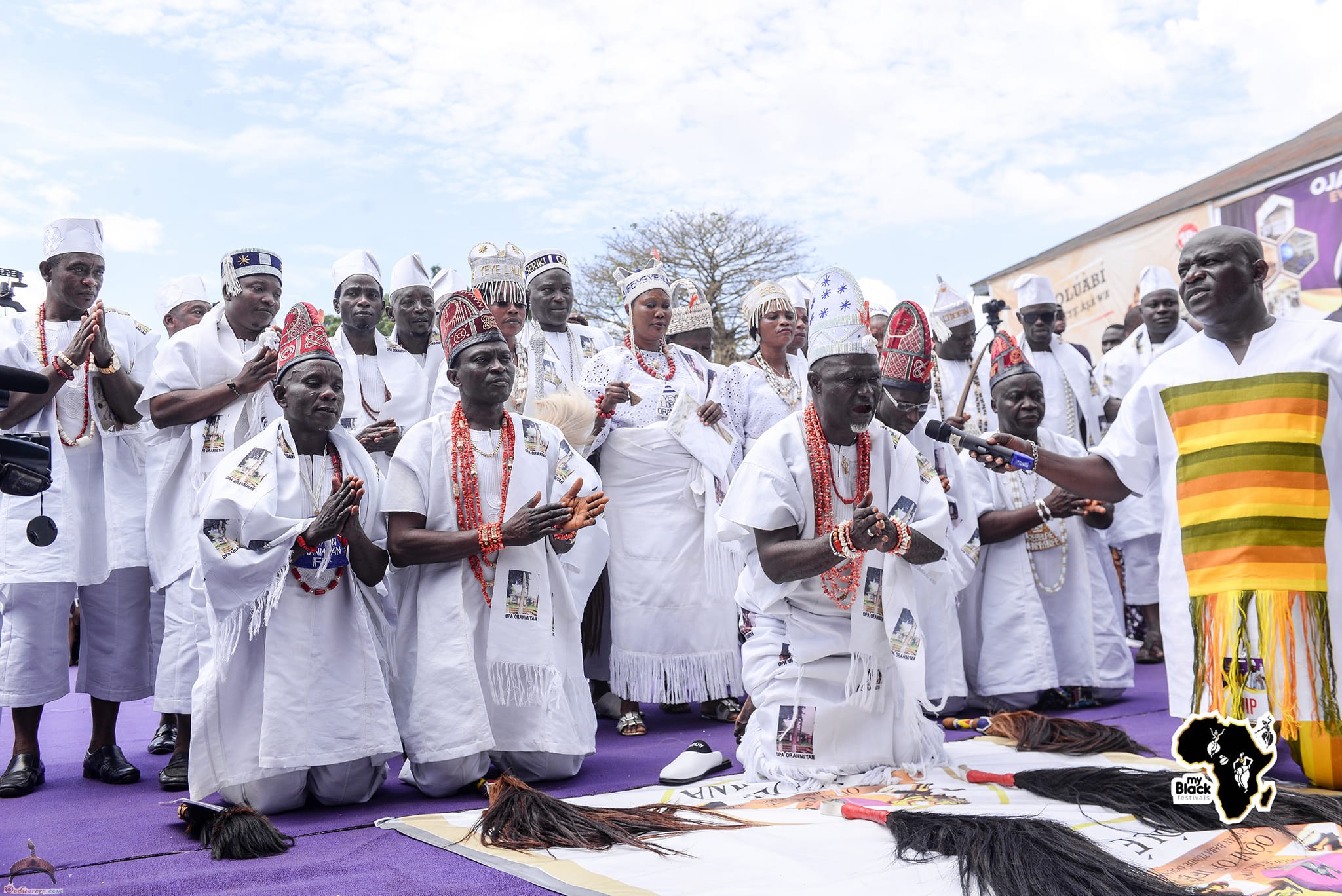
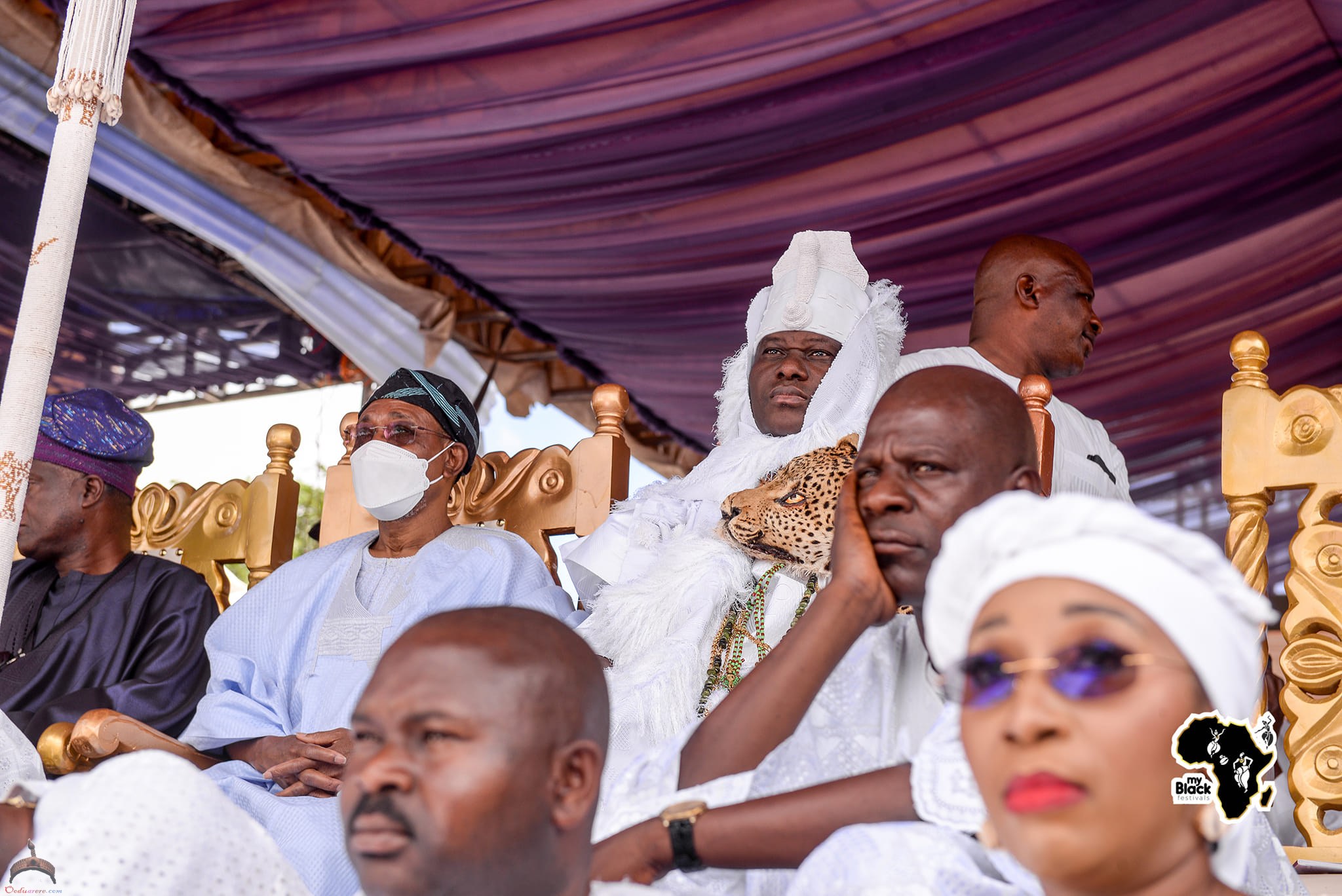
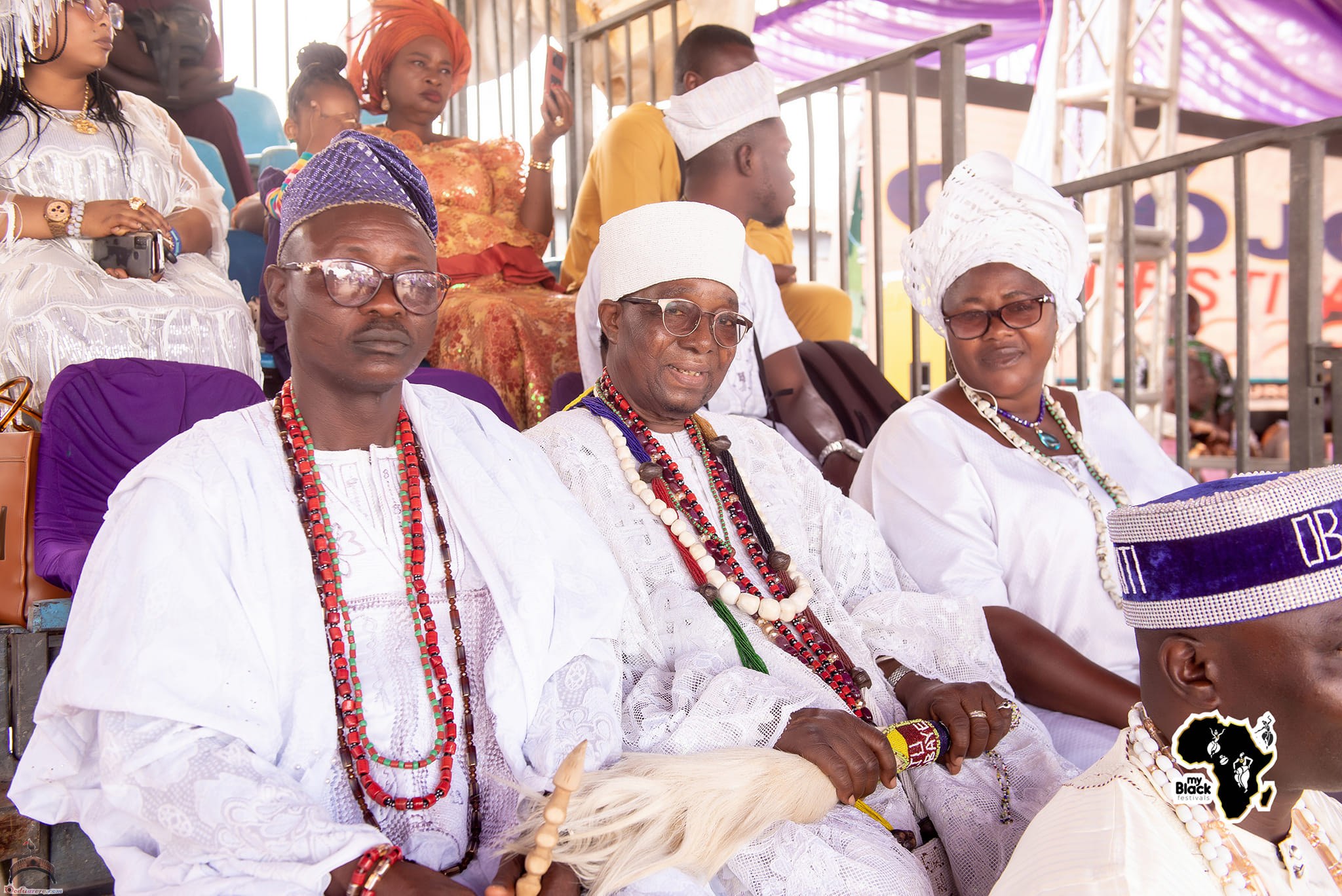
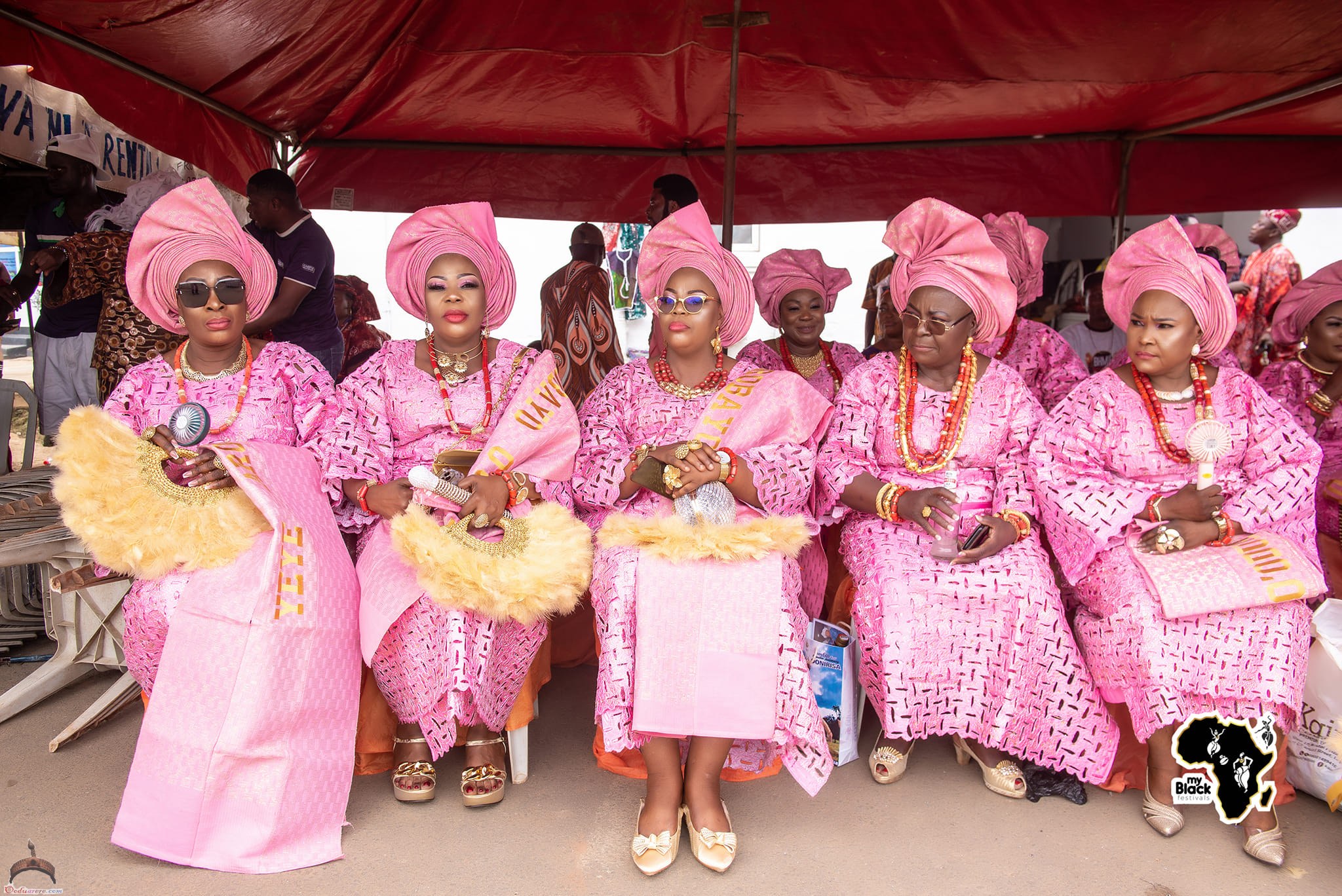
After extensive consultation, an agreement is reached most often for the second weekend of September or October.
The Ooni is informed through the ‘Emese’ of the deliberations and the Monarch in turn chooses a date suitable and convenient for him. Whatever date Ooni chooses automatically becomes the date for the celebration of the festival. Hence the derivation of the festival ‘Olojo ni o lojo’ is now coined ‘Olojo’ meaning Ooni owns the day. Thereafter, Chief Eredumi will round up the meeting by saying, ‘We have chosen the date today. He will then pay with the traditional ritual items of one bottle of Schnapps (hot drink), Kola nuts and ‘Itan Ekiri’ (thigh of grass cutter) and the meeting will come to an end.
The realism in the Ife festival is so fundamentally monumental that everything surrounding it possesses universal dimensions.
The cultural ideals of the Ife ancestors bestow divine sanctions most of which are traditionally kept and observed today. The Ife ancestors instituted these clear-cut responsibilities as a mark of respect and appeasement to the gods as well as instruments to control and pilot the affairs of the community.
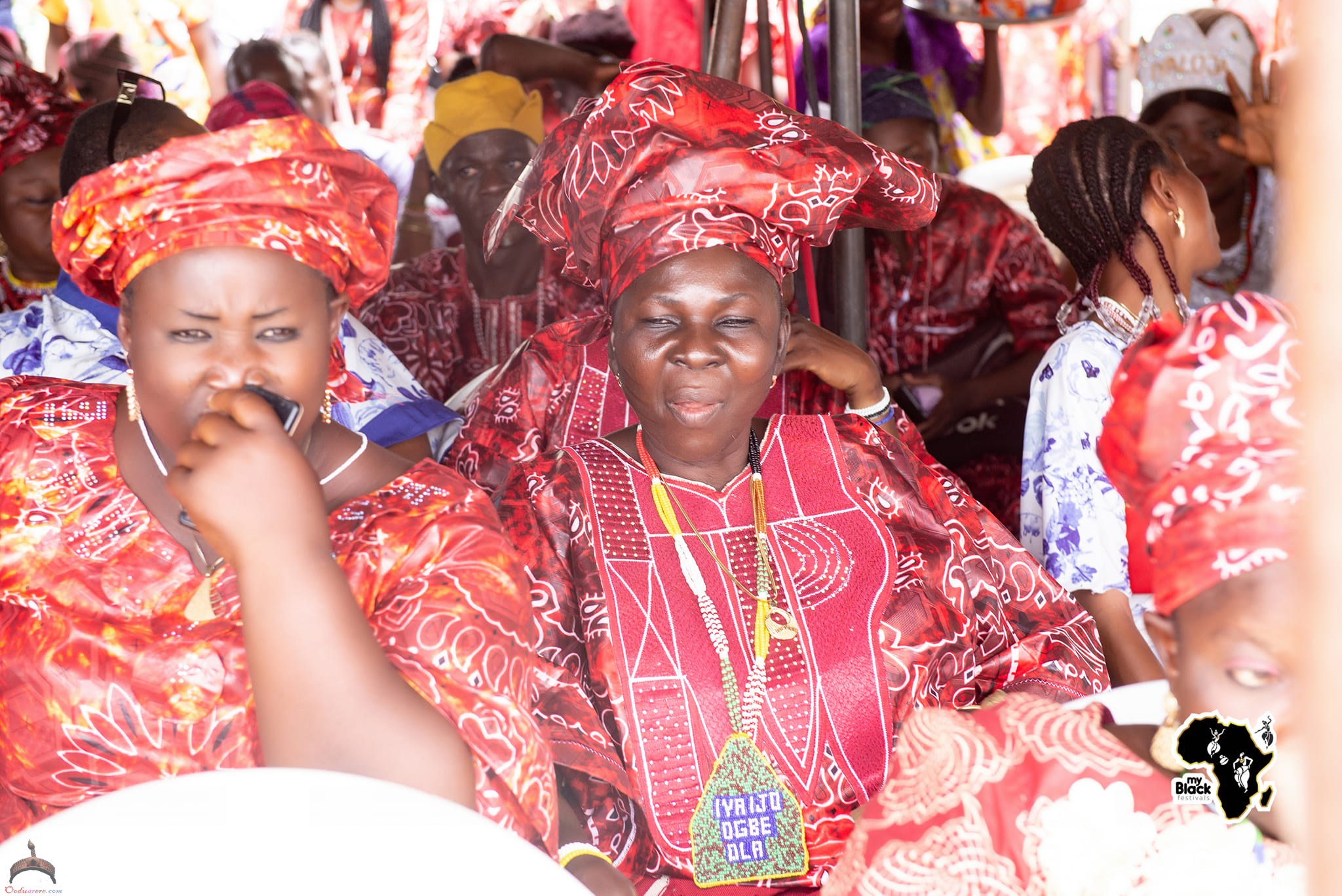
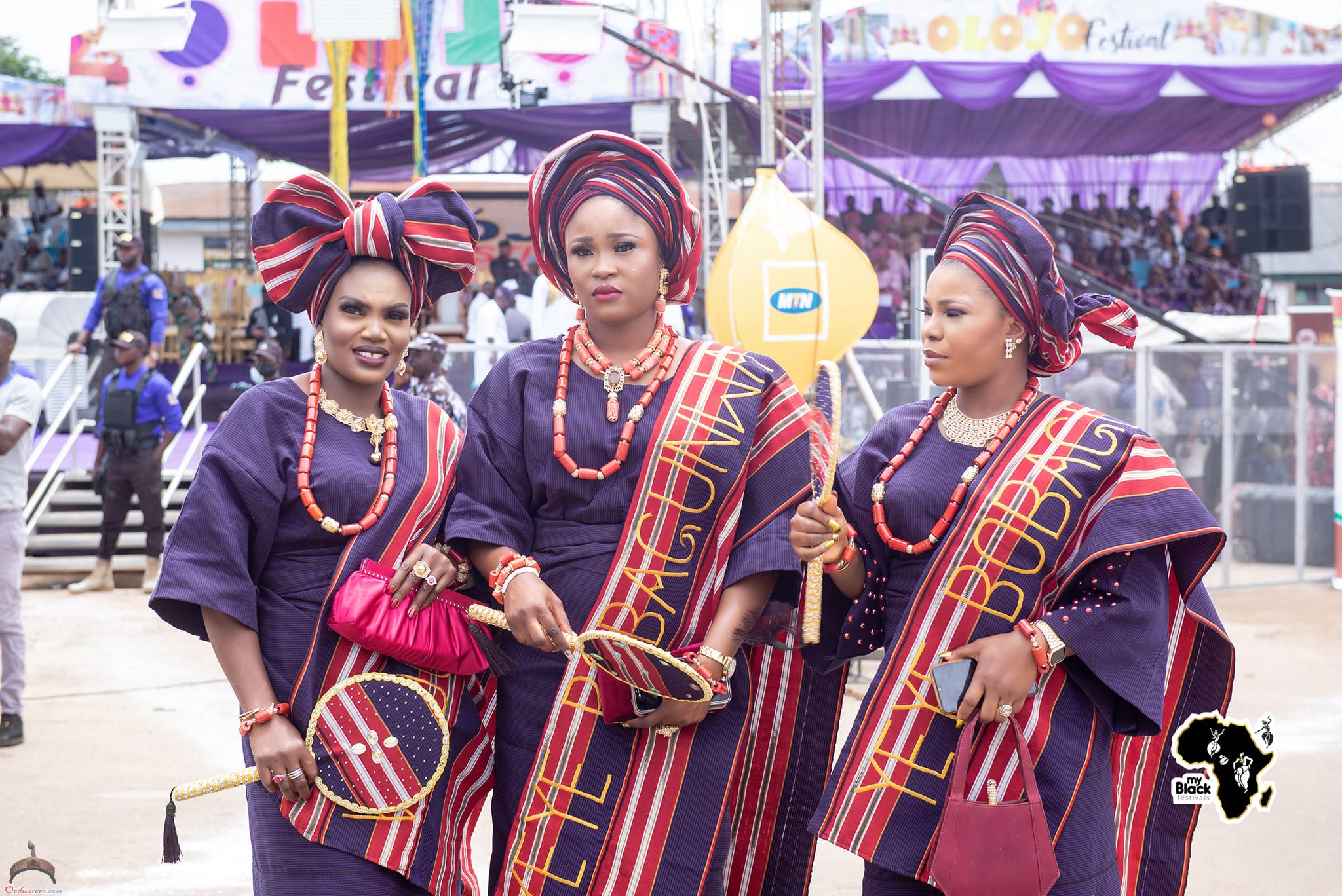
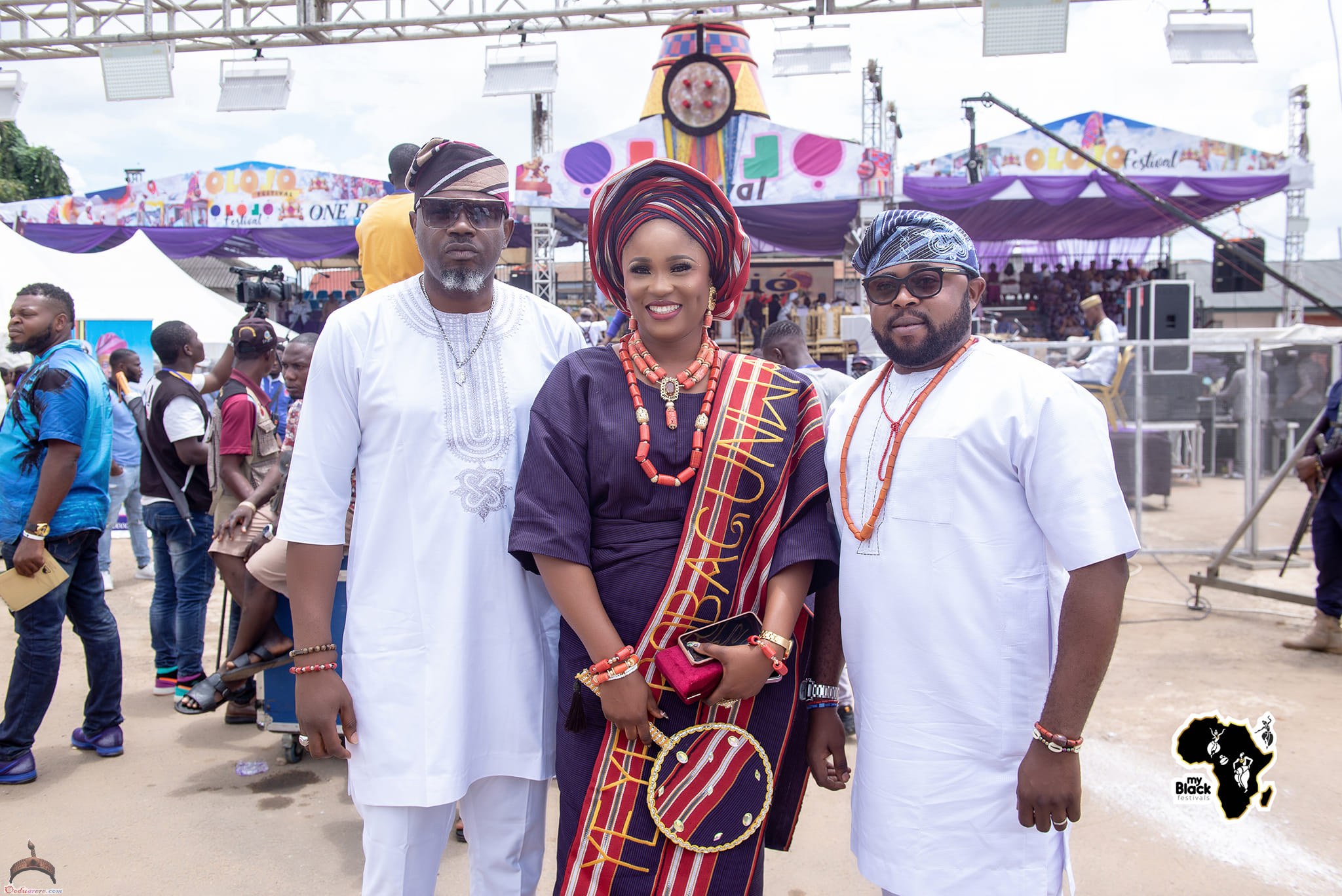
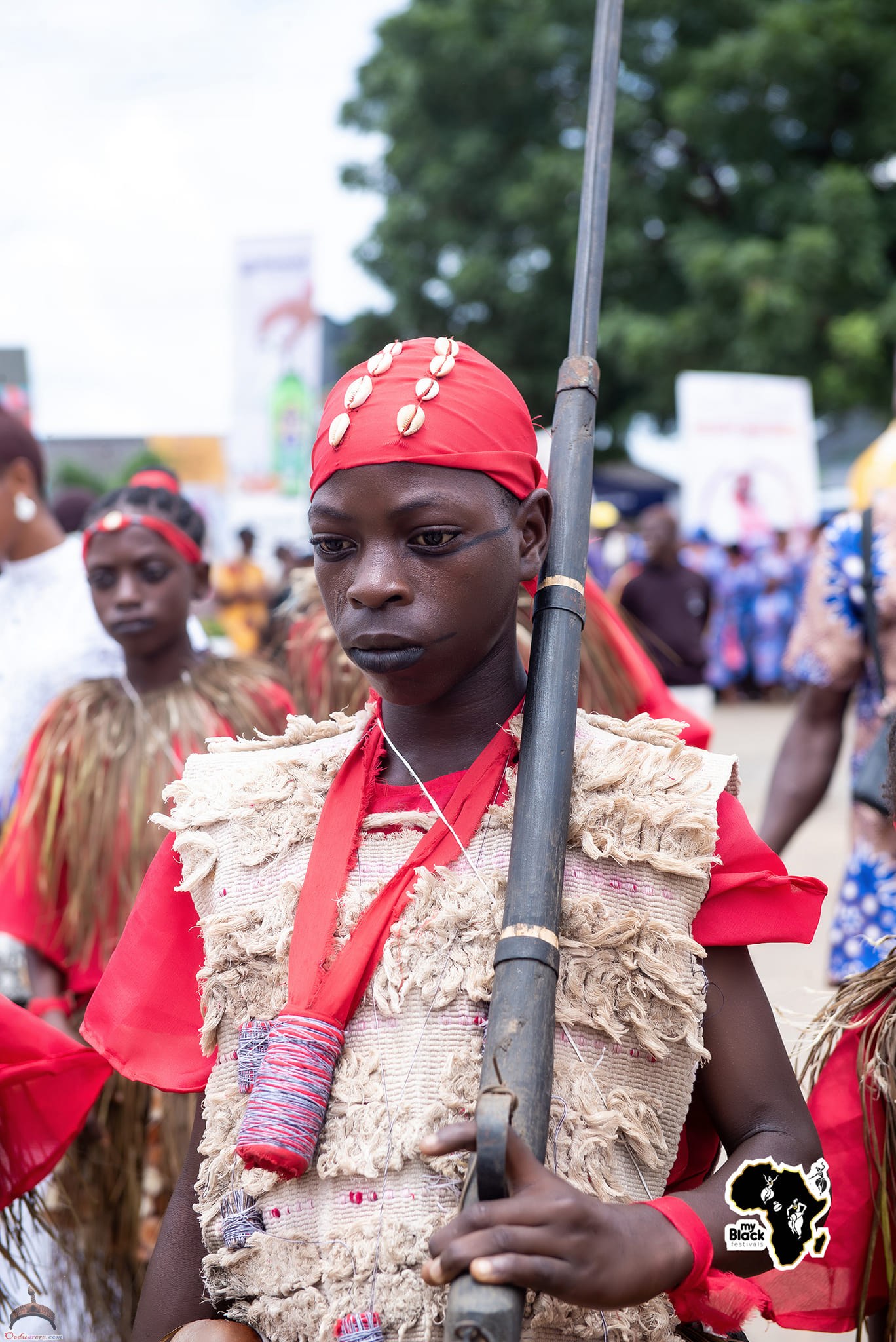
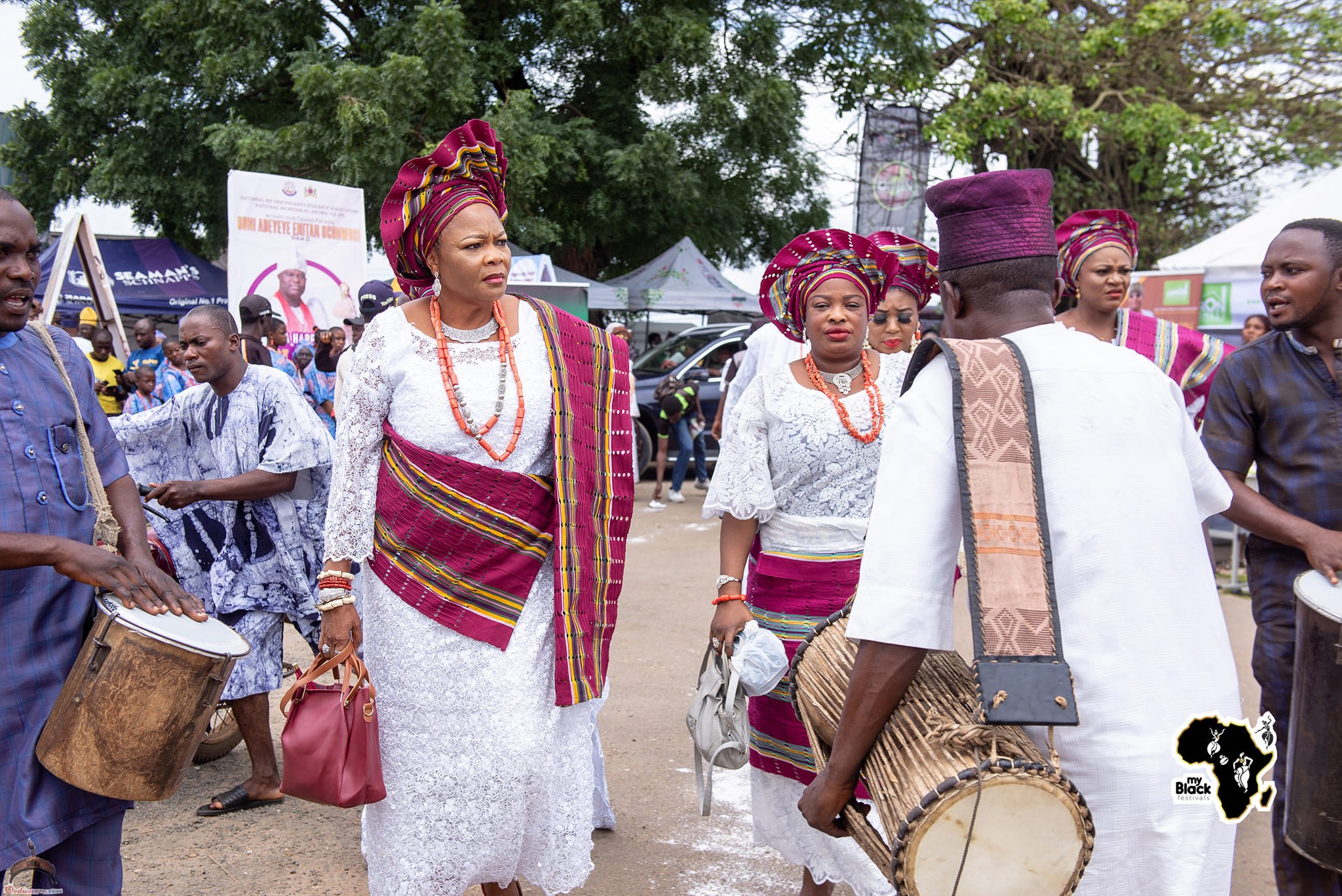
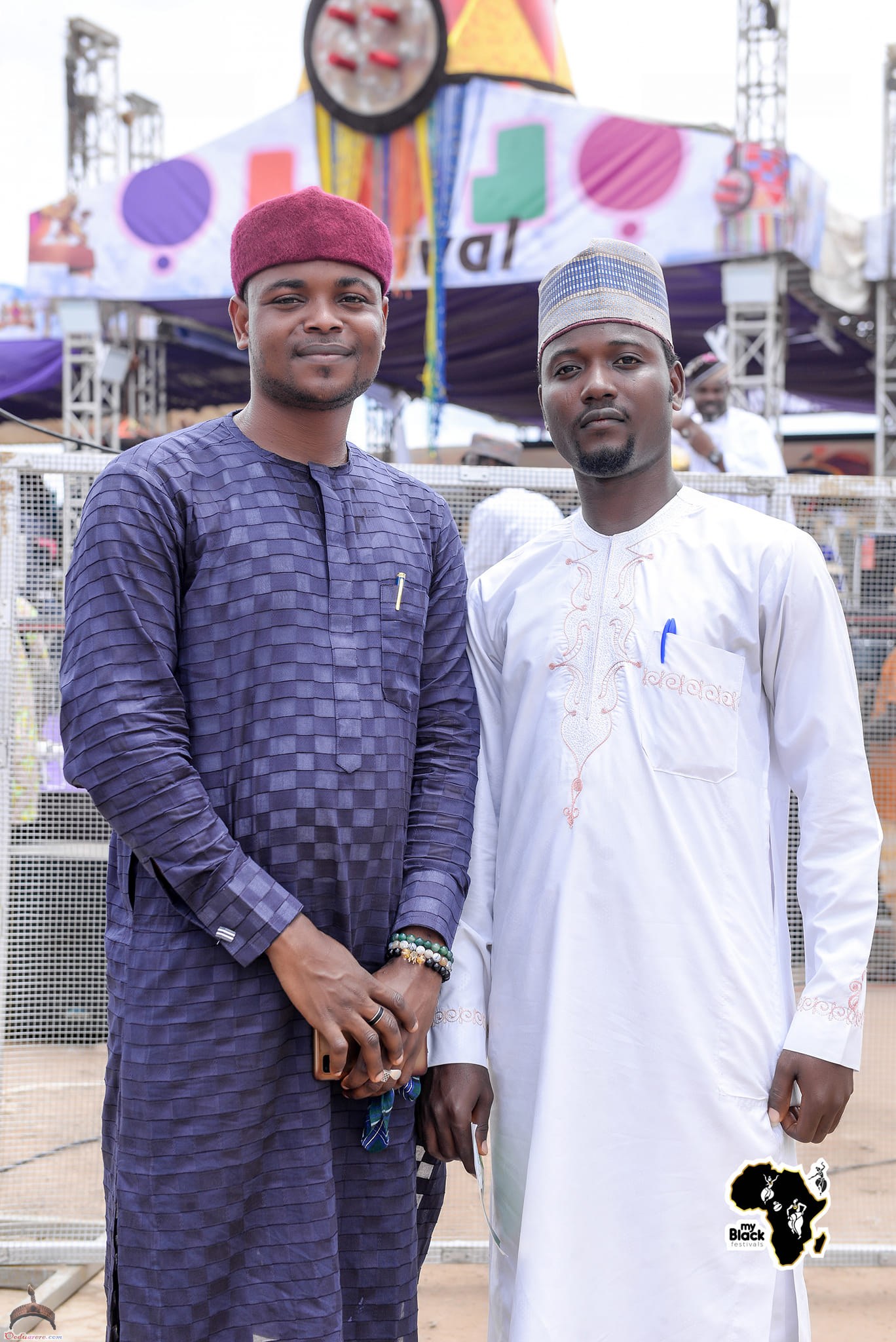
Olojo Festival from time immemorial parades some of these divine sanctions concerning the Osogun (Chief Priest) of the Ogun deity around which the festival is woven round.
Annually from the day the date of the Olojo festival is fixed, the Osogun must not see the Ooni or come near the palace until they meet at the first ‘Okemogun’ when the Chief Celebrant, the Ooni of Ife leads the long procession of his Traditional Chiefs and Priests to perform at the shrine of Ogun.
Also, the ‘Osogun’ by virtue of his Chieftaincy title is forbidden by tradition to sit in Ooni’s palace. Whatever the duration of his stay, it is traditionally obligatory for the Chief Priest to be in a standing position.
Olojo Festival lasts for three days. However, before its celebration, the Chief Celebrant, the Ooni of Ife goes on a spiritual retreat (a state of incommunicado) during which he never interacts with mortals for seven days.
During the period of seclusion, the Monarch undergoes spiritual cleansing and purification as well as meditation with the ancestors. He is said to be exclusively gone into the spirit world. The priests, on the other hand, are engaged in other traditional and cultural activities.
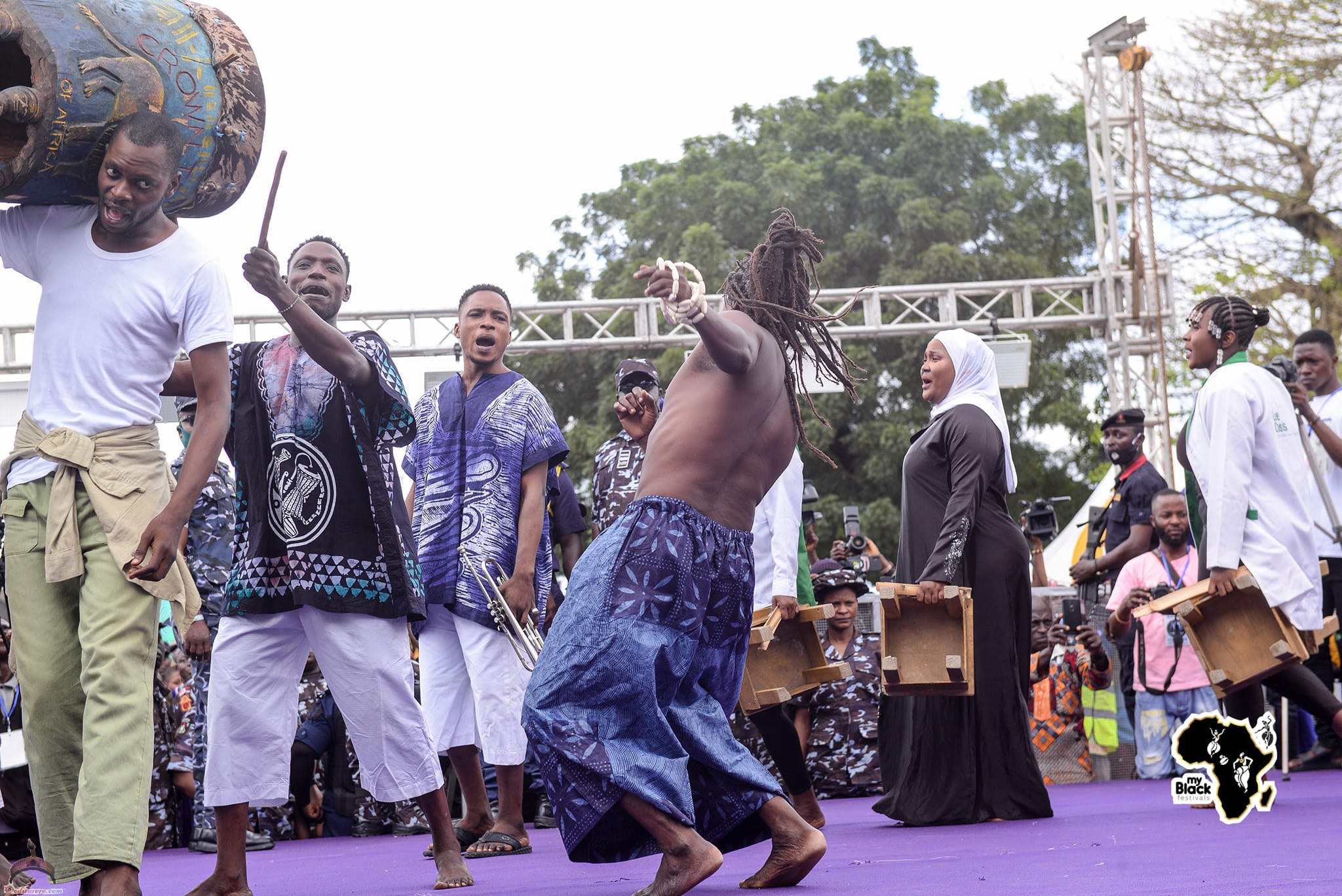
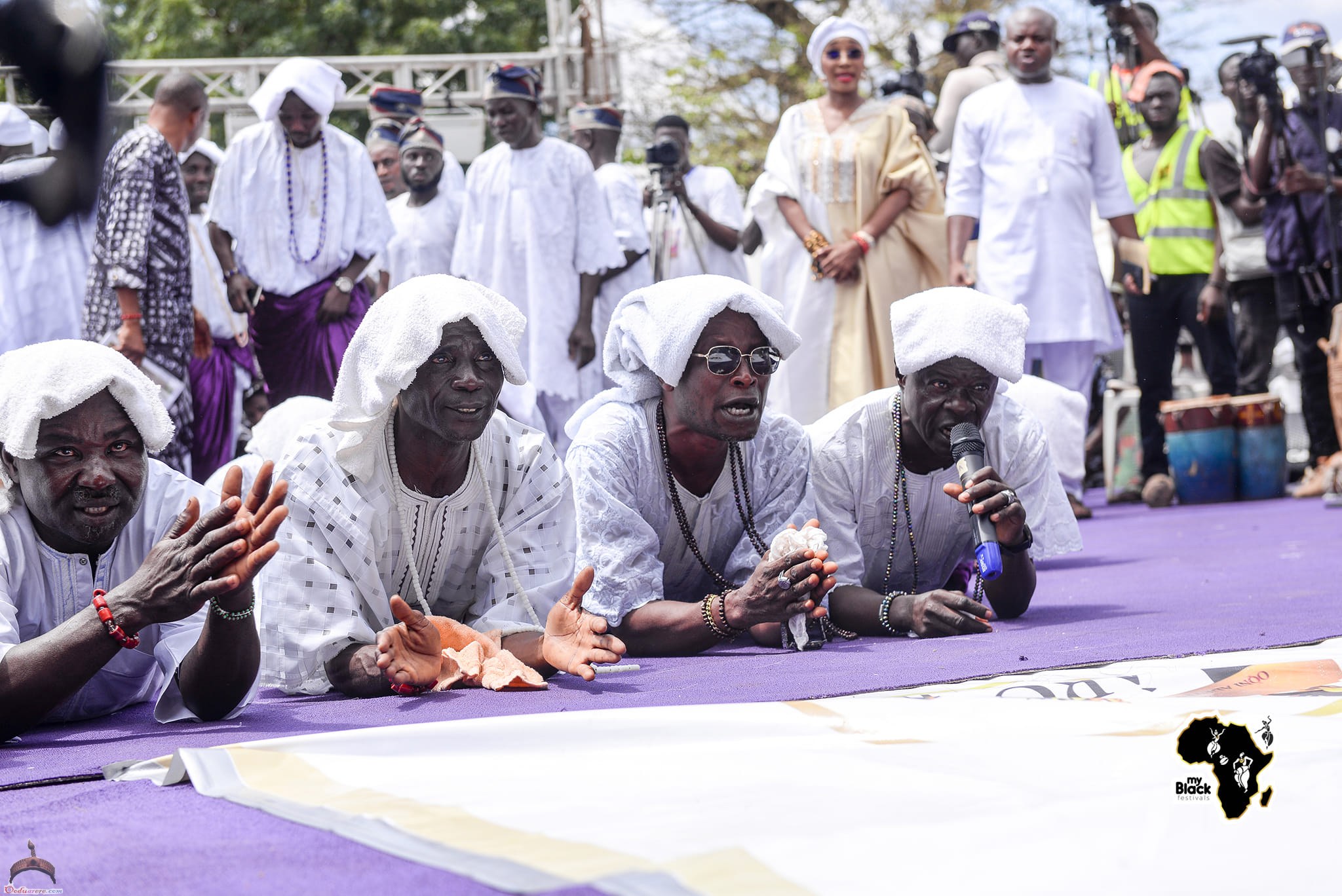
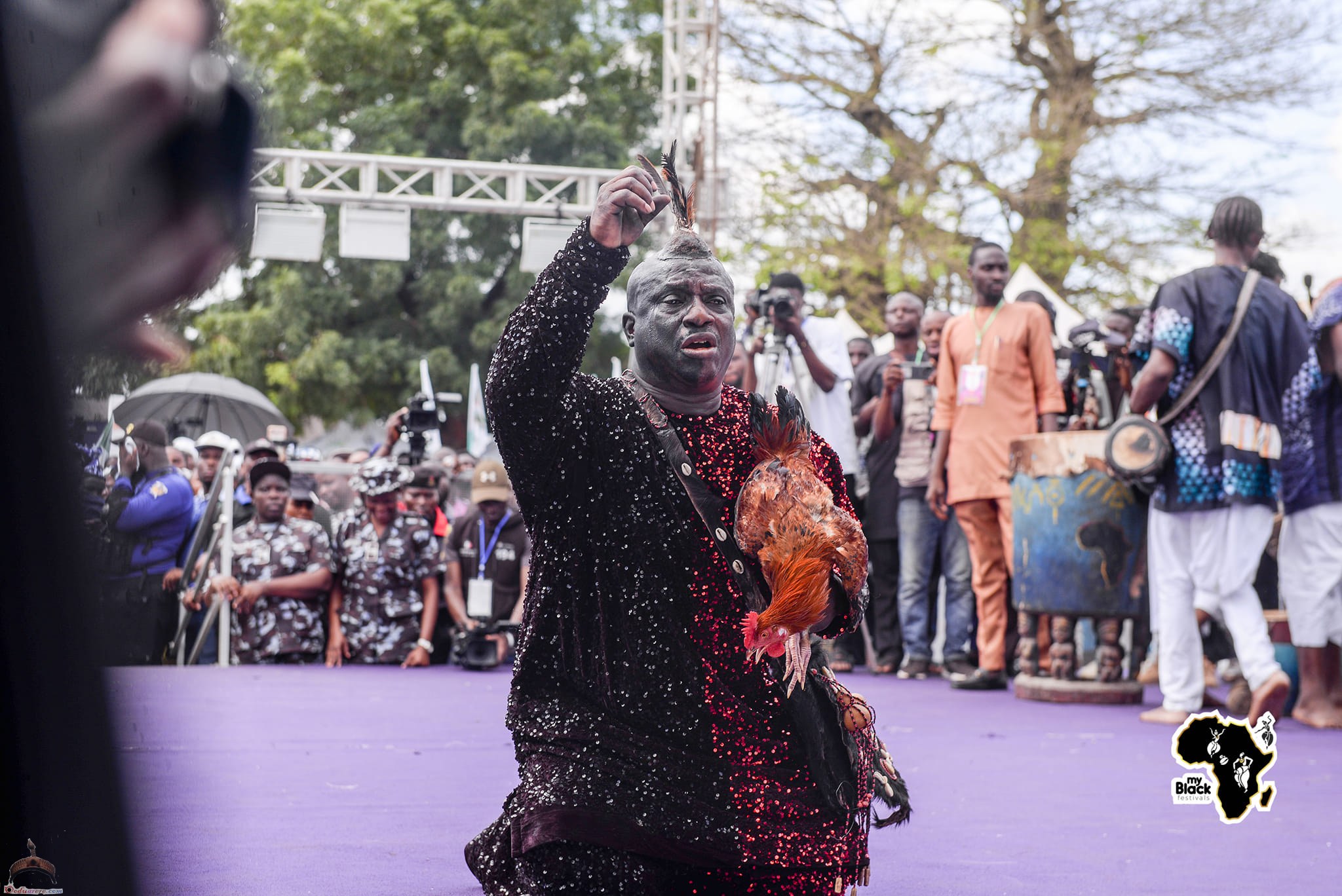
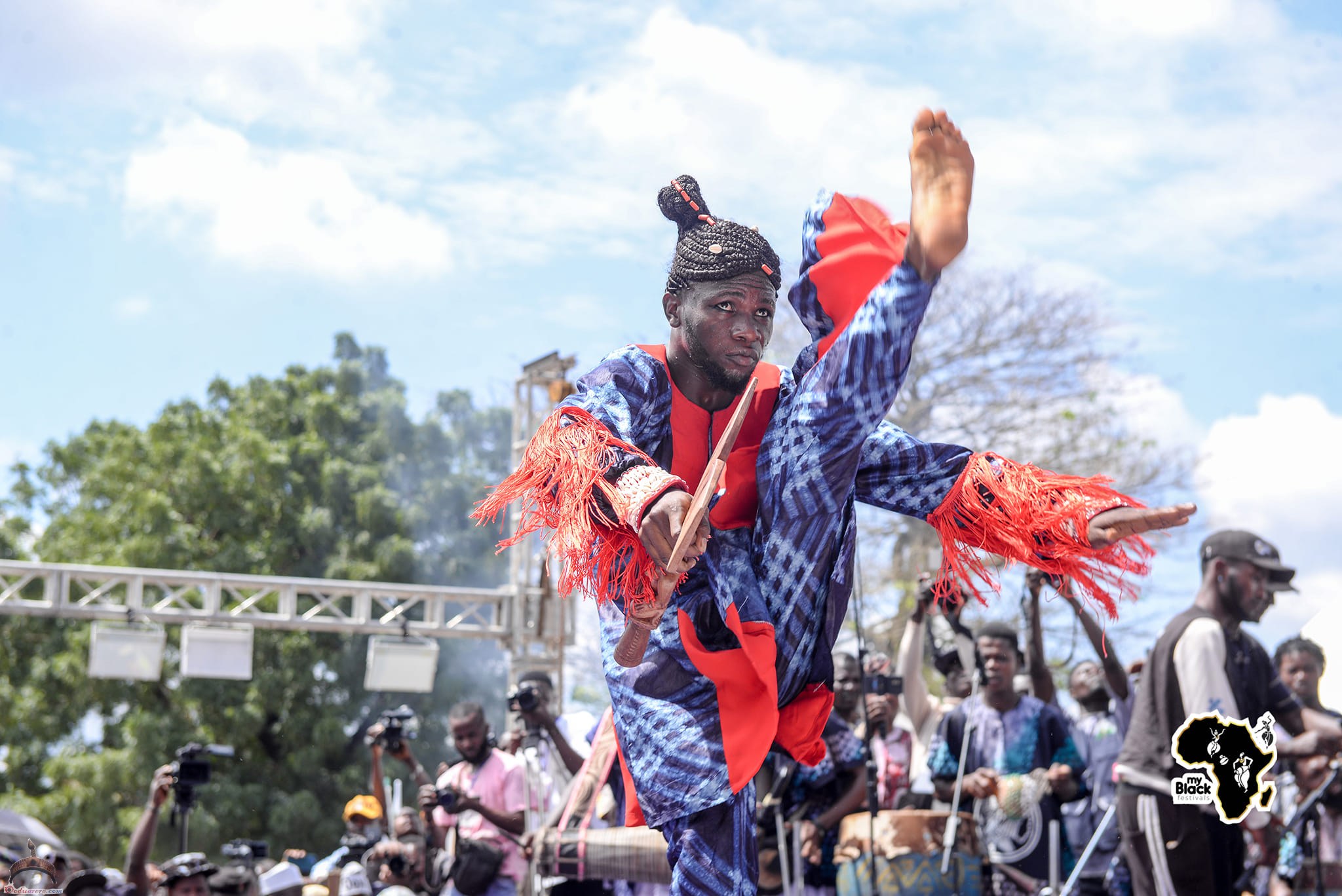

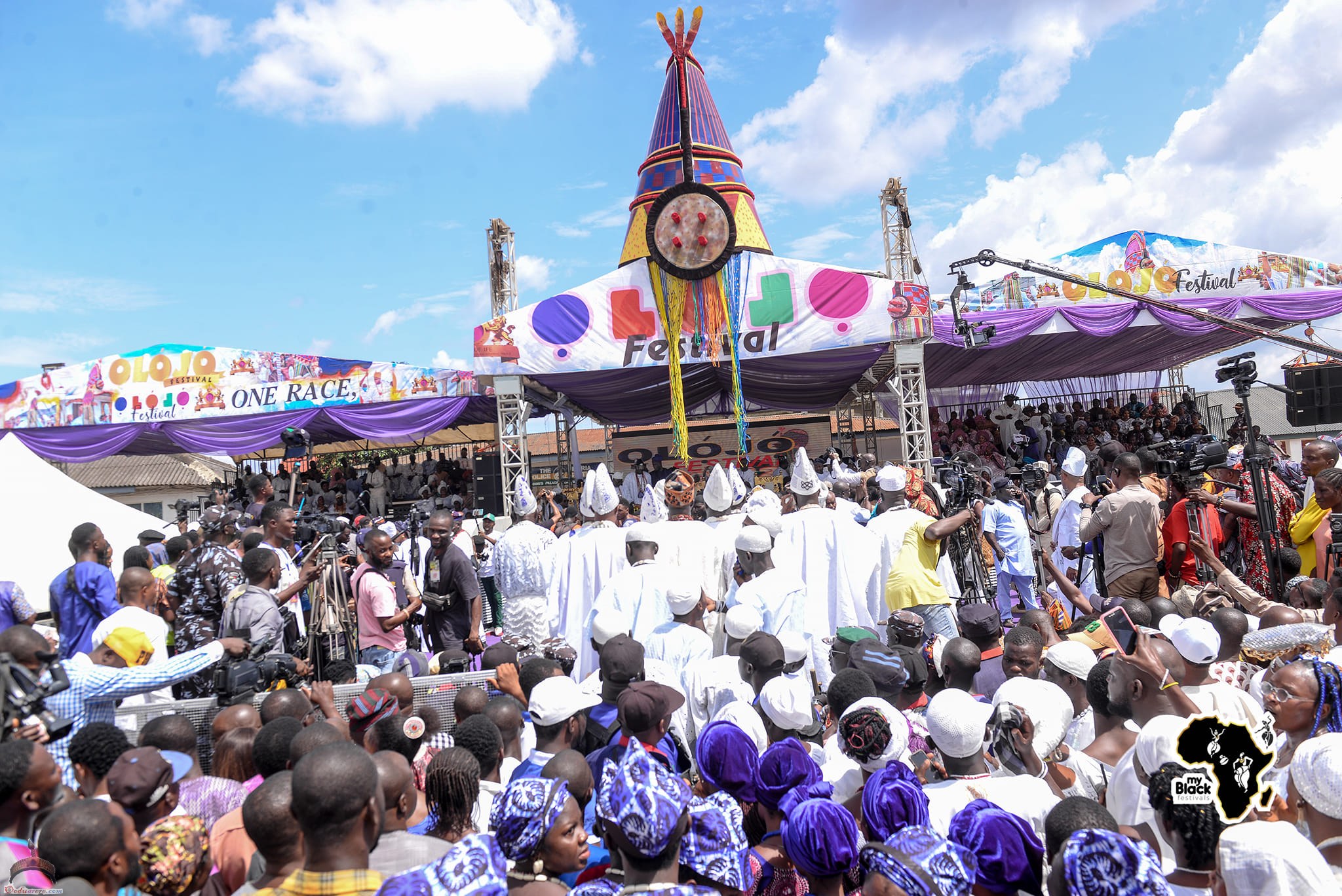
Thereafter, the festival begins with a ceremony known as ‘Ilagun’, which is ritual communication between priests and the god of iron. From ancient times, this ceremony falls on Friday and starts at midnight to the early hours of the following day.
It is otherwise known as ‘the Vigil’. The highlight is the traditional presentation on behalf of all Ile-Ife blacksmiths of two new hoes and a certain quantity of iron bell gong at Okemogun by Chief Ojugbede as ritual items.
At dawn precisely 6. am, the young ‘Emese’ also known as ‘Lokoloko’ (Ooni’s bodyguards) as tradition demands will go on a search for roving dogs. These dogs when found are tied to long sticks and brought to the palace alive while the ‘Emese’ go dining at the Osirigi family house.
In the evening same day between 4 o clock and 5 o clock pm, the Osogun will visit the palace to beckon the Ooni over to meet him at Okemogun, the shrine of the Ogun deity with a song:
Irere O
Irere O
Ka pade ni Mogun O
Irere O
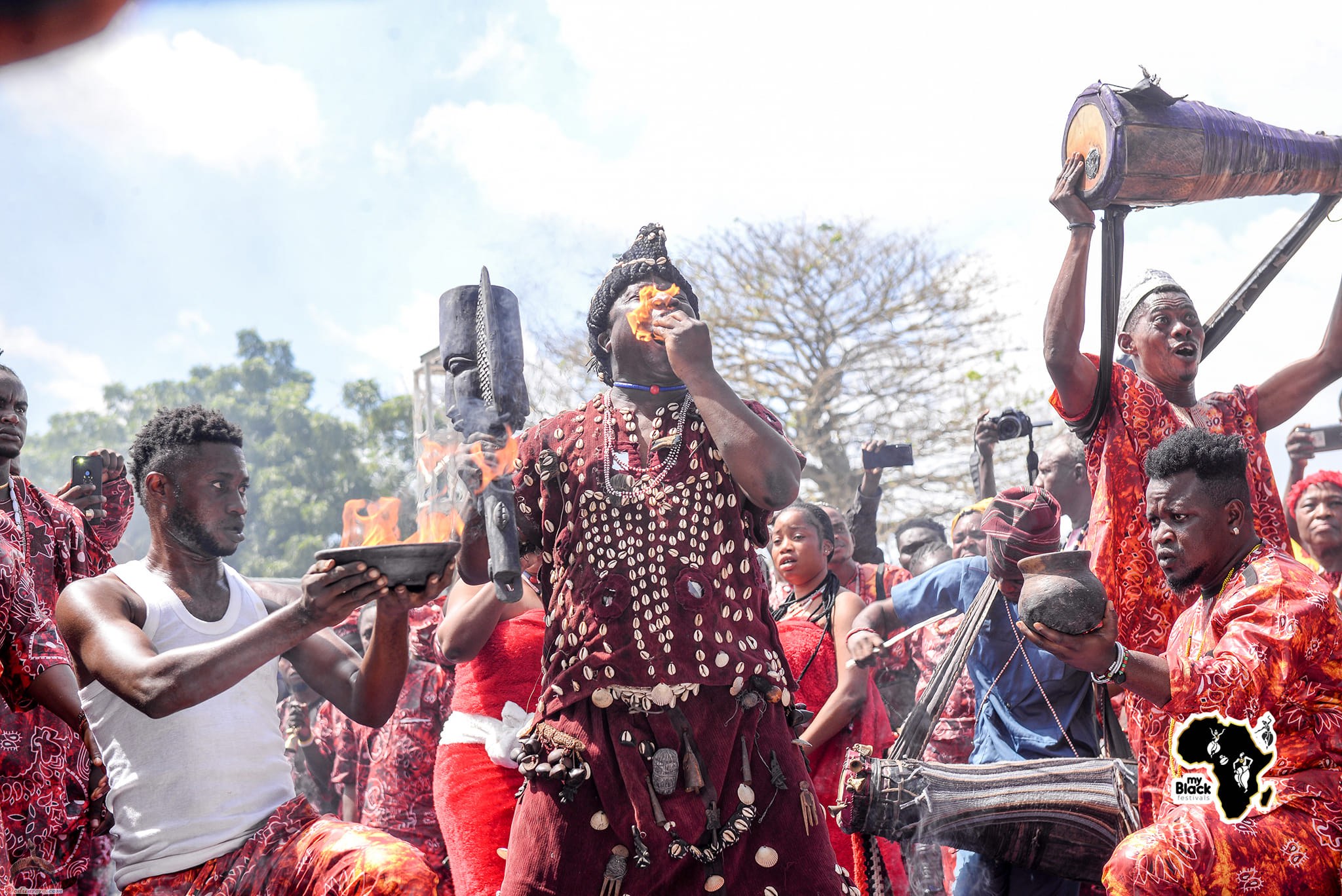
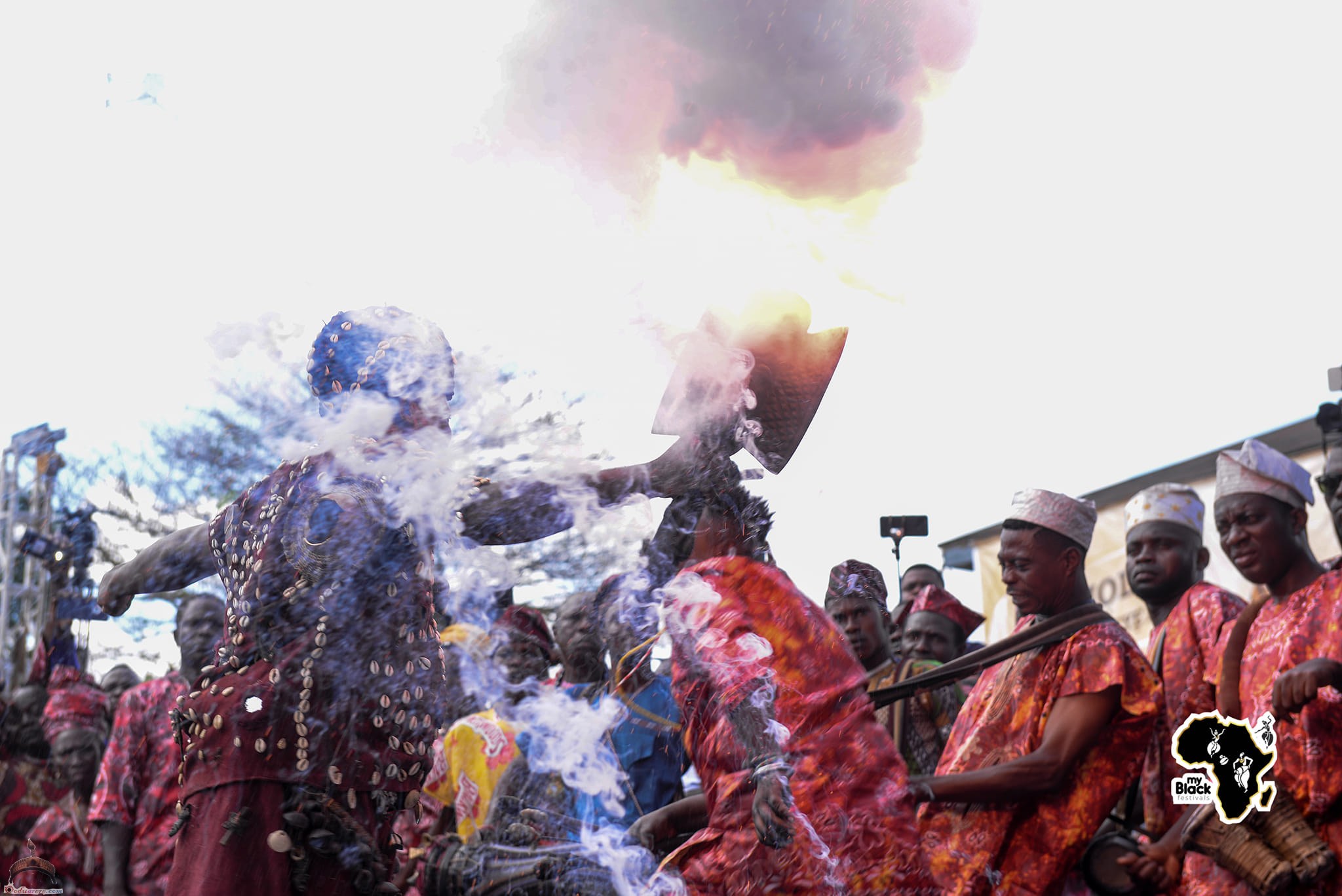


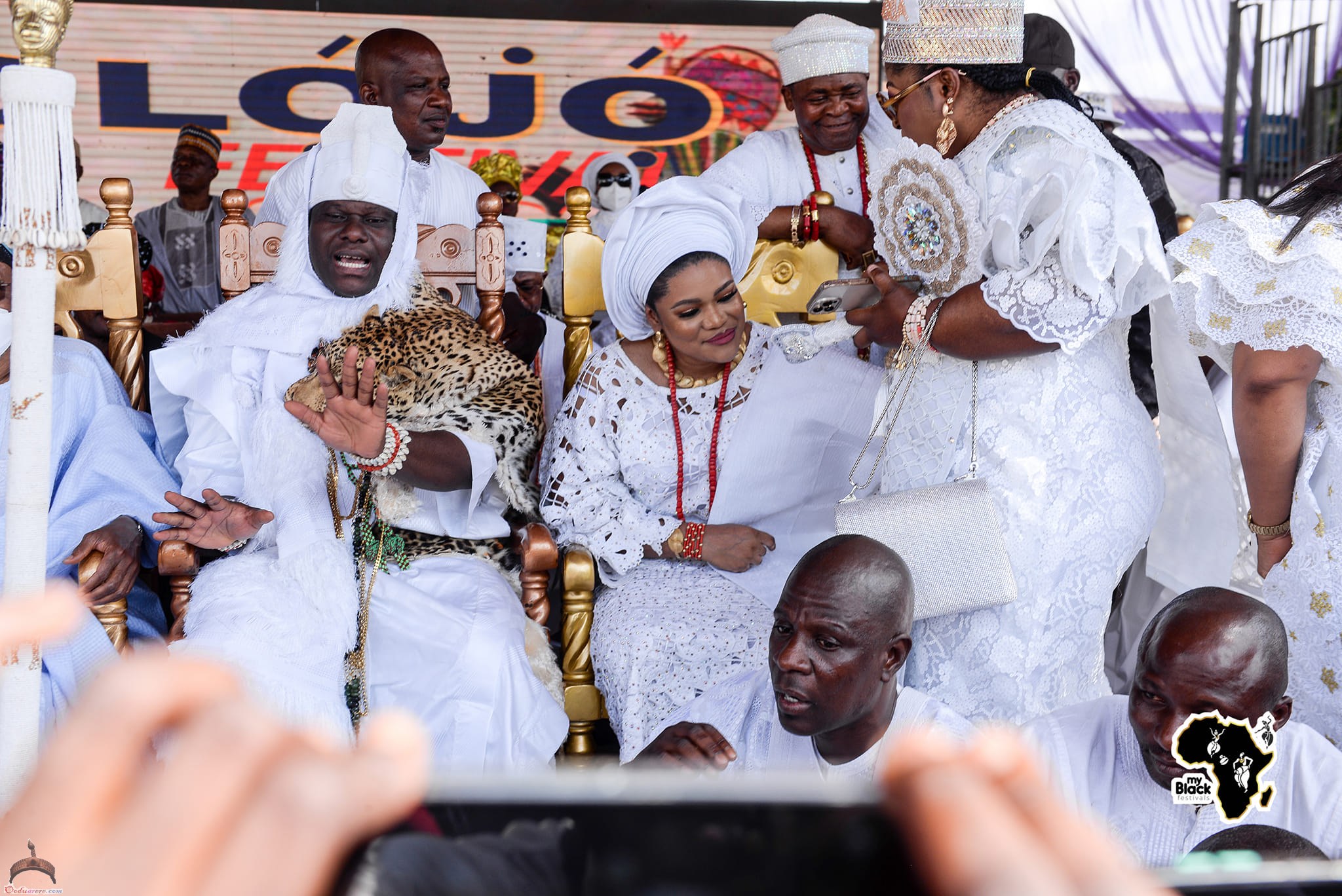
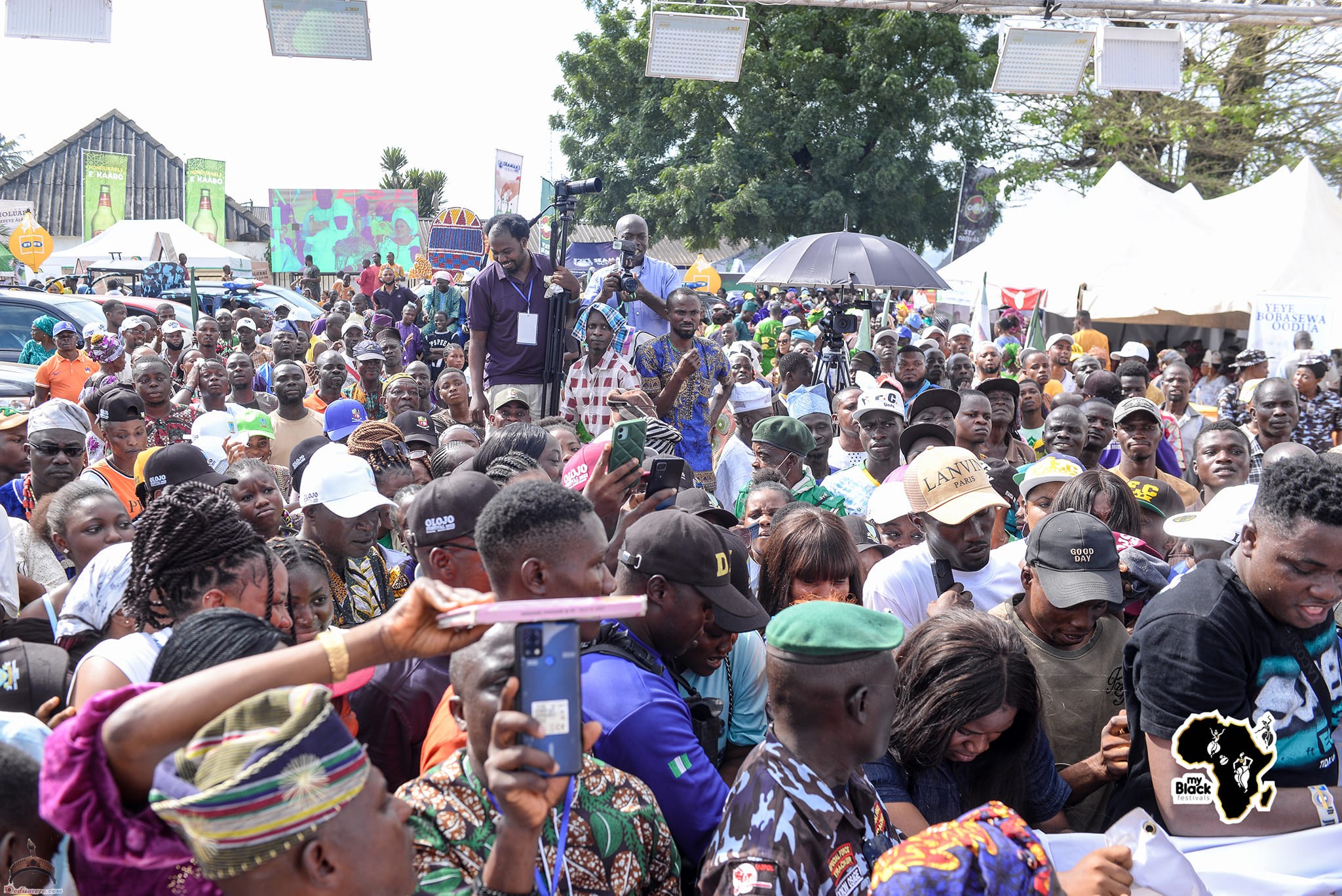
(Meaning let us meet at Mogun Shrine)
The Ooni will reciprocate the invitation by sending the ‘Lowa’ of Ife and some Modewa Chiefs to represent him at the Okemogun Shrine with the following sacrificial items:
2 big Snails, 1 Cock, Kola nuts, Salt, Palm oil, Palm wine, 1 male Dog and 1 female Dog.
Thereafter, the ‘Iwara’ Chiefs and Elders will procure the palm frond with which the Osogun adorns the Okemogun shrine. The Osogun will announce his arrival to Chief Obajio thus:
Olorin o
Olorin o
Olorin o
Olorin o will then respond by saying:
Olorin wa je
Olorin wa je
Olorin wa je
The ‘Olorin’ will sacrifice the two dogs traditionally with a big club. Immediately the voice of the ‘Obajio’ of Ife will be heard saying, ‘Aa refe’.
Afterward, the male dog is split open, stretched, and tied up at the shrine for the sacrifice. In the course of adorning the shrine in preparation for the ceremony by the ‘Osogun’, the ‘Lowa’ of Ife who is also the head of Modewa Chief hand over to the ‘Osogun’ on behalf of the Ooni and people of Ile-Ife the sacrificial items for the ‘Ilagun’ ceremony.
The Osogun now dressed in the traditional red ceremonial attire and the ‘Obawara’ in the company of the ‘Obajio’ and ‘Obadio’ (Chief Priest of Oduduwa) who officiates at Ilagun and first Okemogun pour libations to Ogun deity in the course of which they pray for unity, peace and progressive development of Ife.
The ‘Osogun’ followed in procession by the ‘Obadio’, ‘Obawara’, ‘Obajio’, and ‘Lowa’ of Ife then perform the ritual dance around the Ogun shrine seven times. After which the ‘Lowa’ of Ife, the ‘Modewa’ Chiefs would report back to the Ooni in his palace while the other Chiefs would return to their various abode. Left in the Okemogun shrine are the ‘Osogun’ and members of his family keeping vigil amid traditional dances. To them belongs the female dog with which he entertains his several visitors.
Day two, which normally falls on a Saturday ‘Oja Ife’ day is the grand finale. Women from Ooni’s family visit the palace in the early hours of the day for the traditional cleanup exercise of sweeping with their brooms. As they sweep up the palace, they praise and sing the Ooni recounting the family’s exploits.
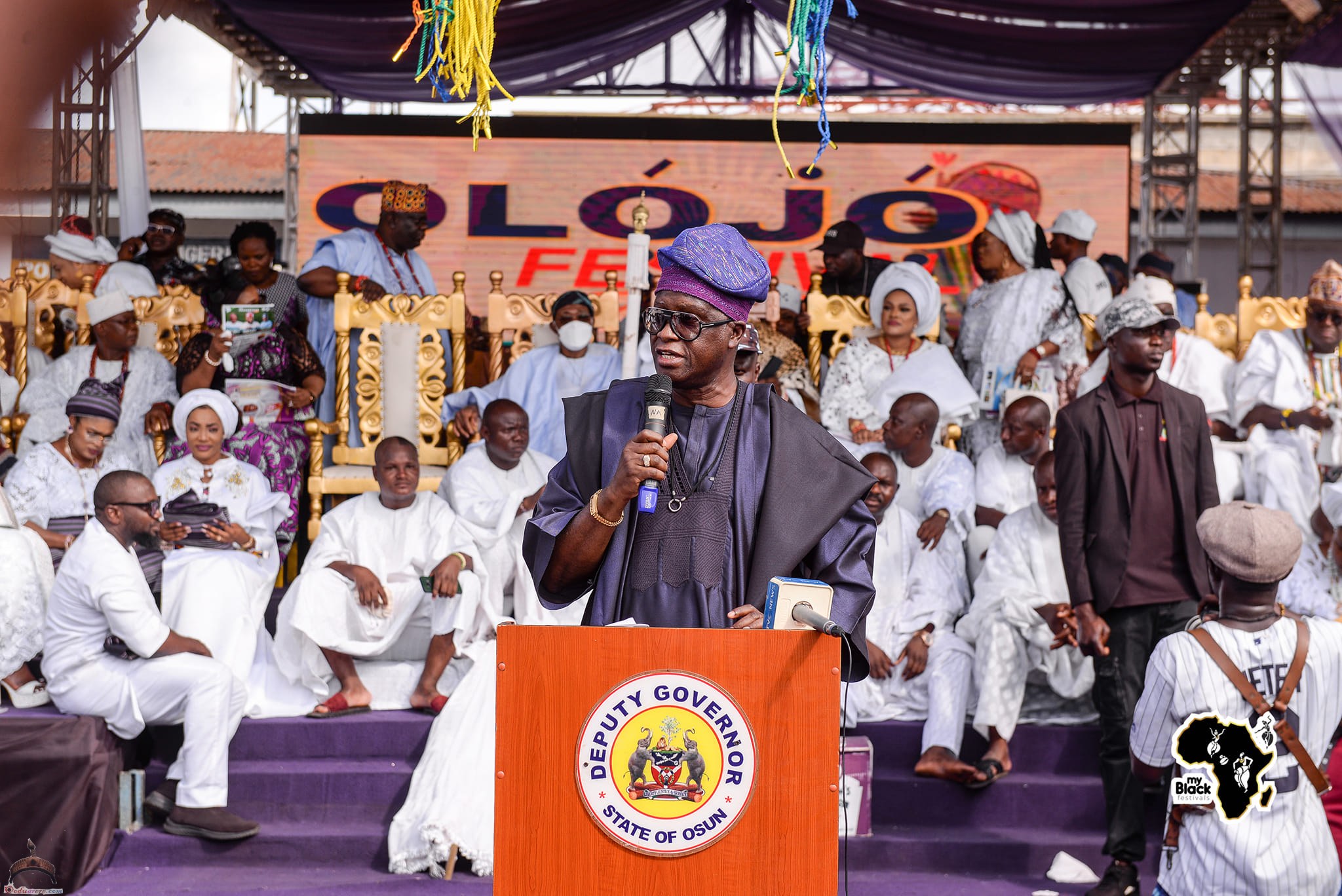
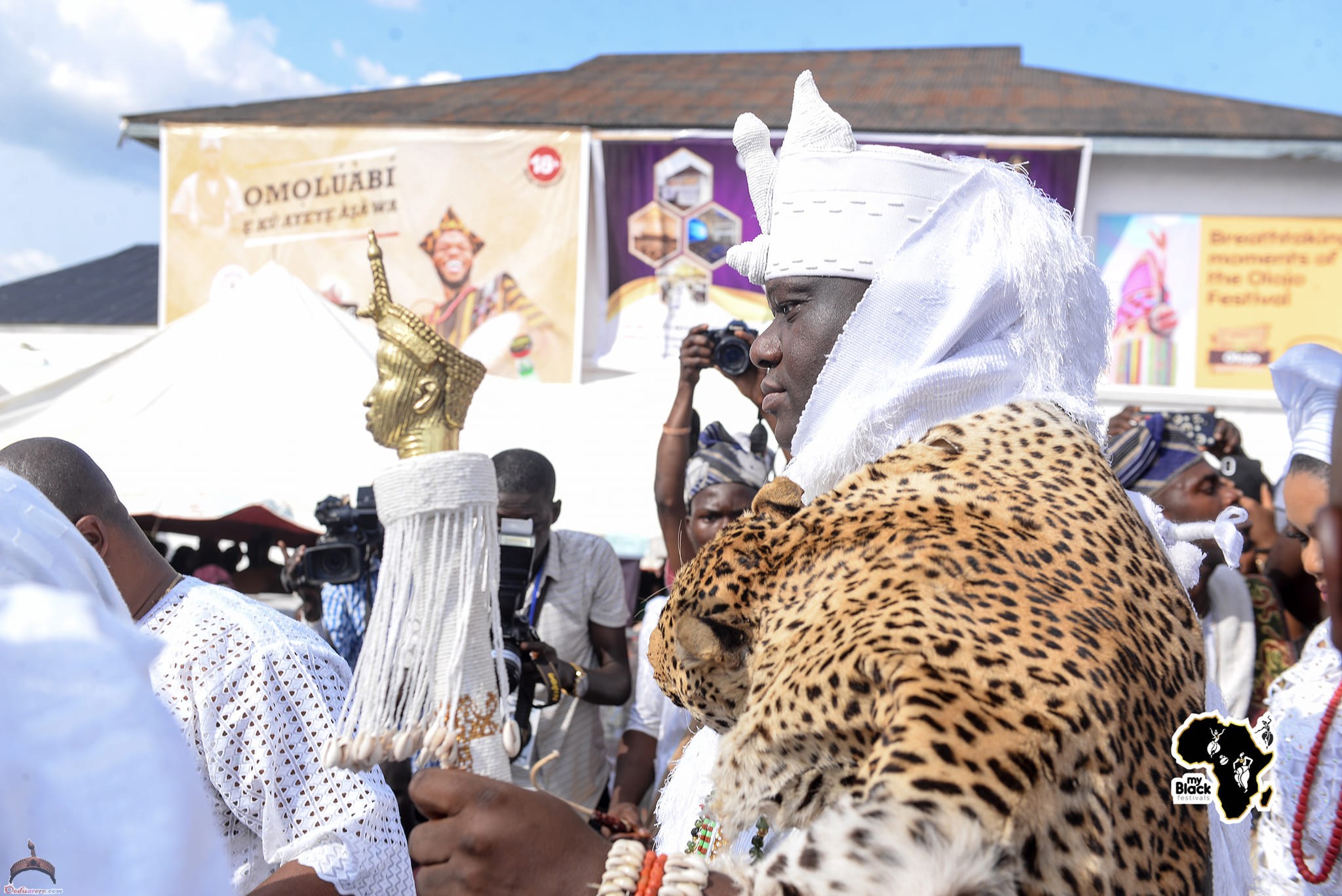
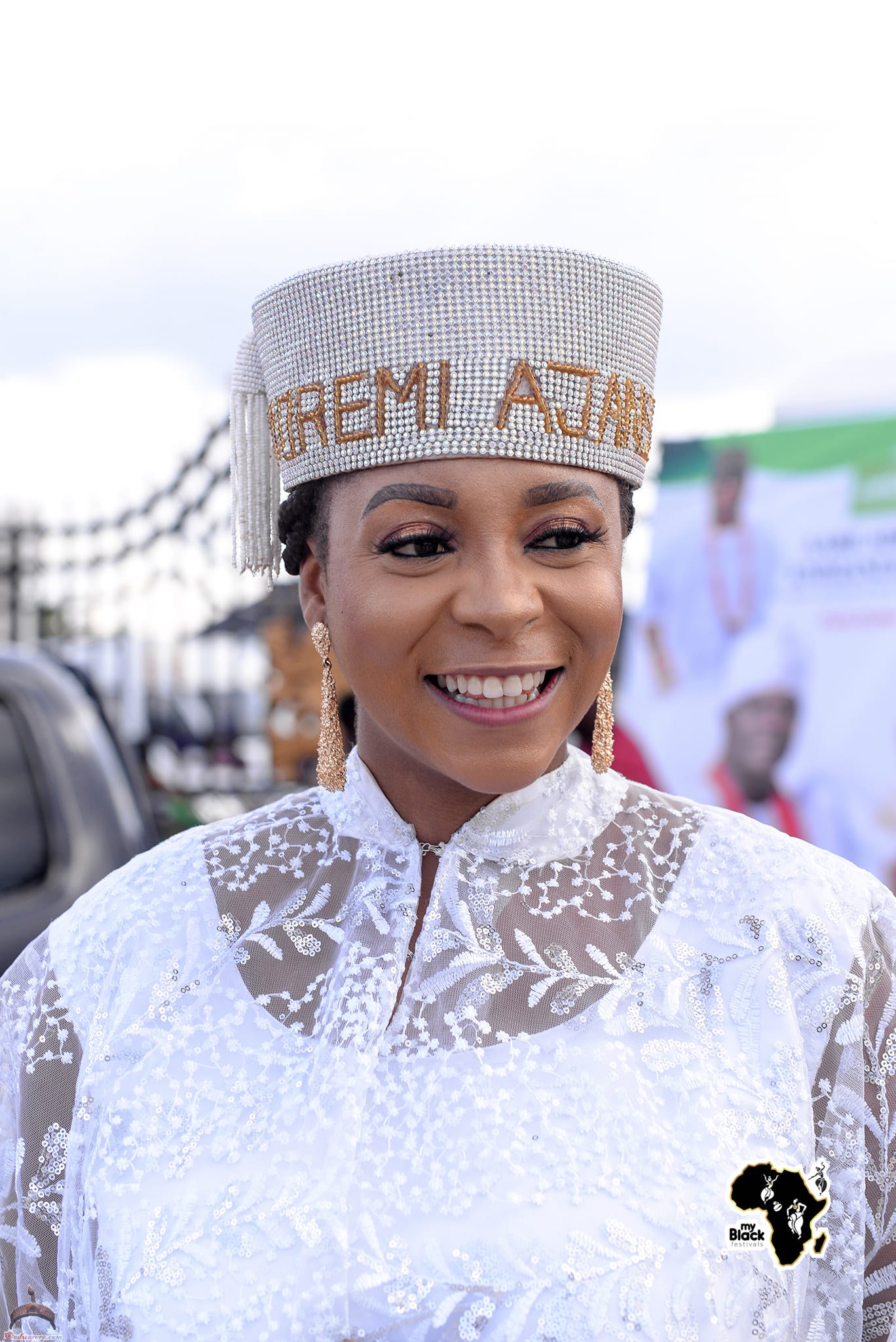
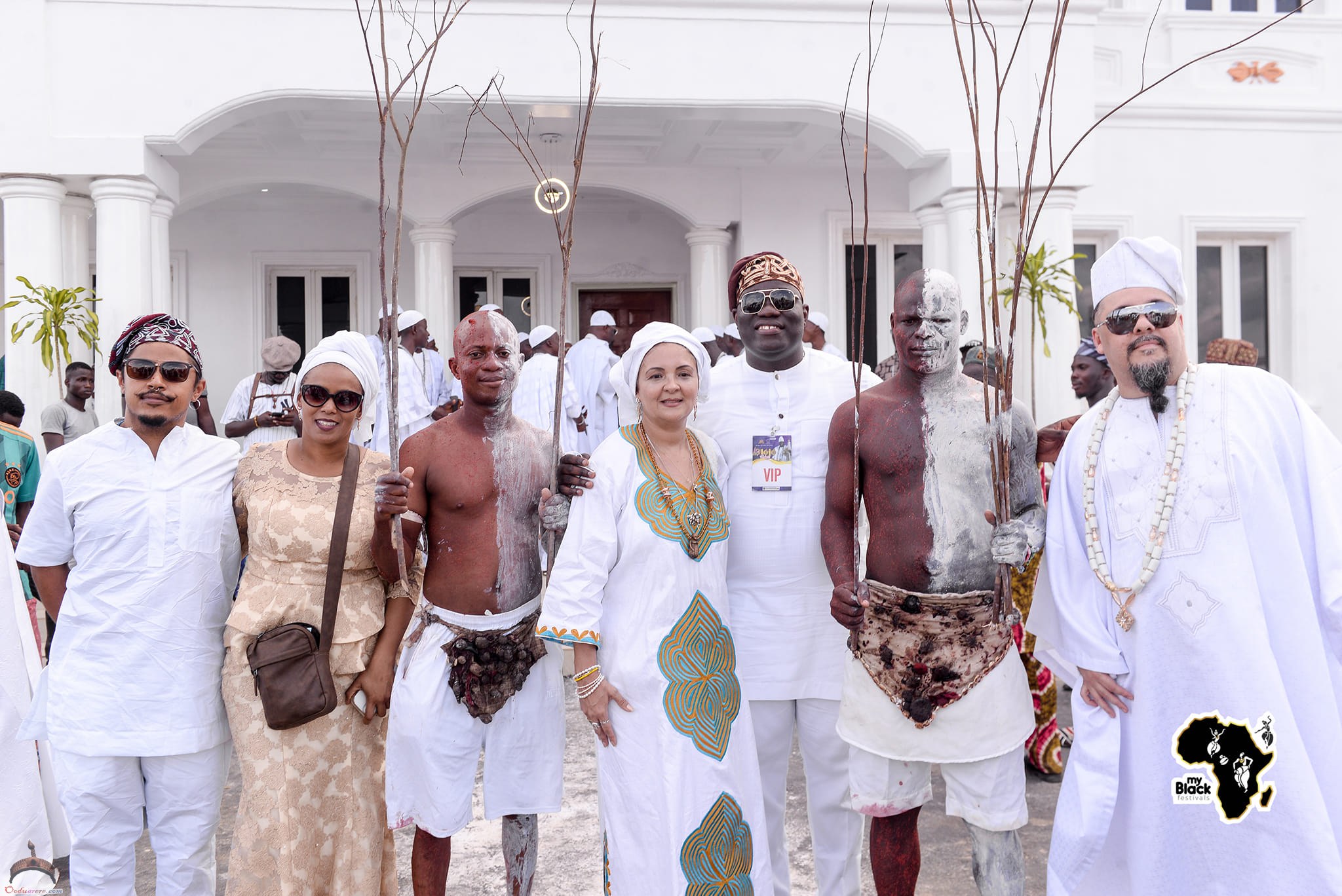

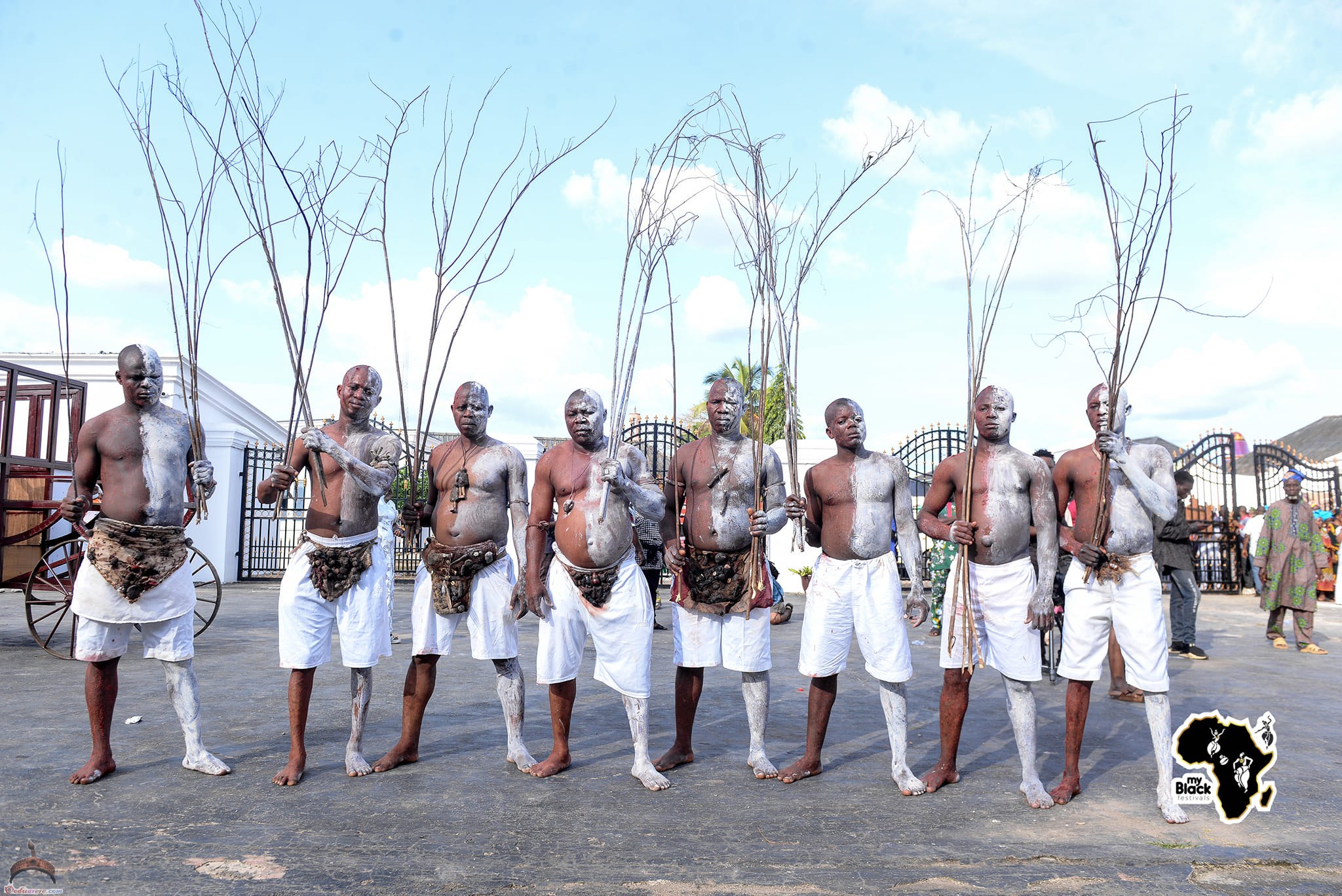
In readiness for the emergence of the Ooni, the ‘Lokoloko’ repeat the action of a past event: the controversy surrounding the birth of Odede Oranmiyan believed to be the son of two fathers; Ogun and Oduduwa. To show the contrasting complexion of Oranmiyan, the Lokoloko will shave and paint one side of their heads and bodies with white chalk and the other with ‘Osun’ camwood.
Traditional attires, songs and dances take the centerspread. ‘Ilare’, ‘Modewa’ and ‘Isoro’ Chiefs are also part of the attractions, adding glamour to the day’s event.
As tradition demands, ‘Egbeji’ and ‘Iba’, the magical Chiefs whose traditional functions are to bring down and prevent rain are on hand to display their magical might to receive the 15 pieces of ‘Abata’ Kolanuts, 42 kobo and three cocks from the Ooni as a prize for whosoever outsmart the other.
The climax of the sequence is the emergence of the Ooni from seclusion often heralded with traditional gun salutations.
Amidst uproar of cheers and deafening ovation, the occupant of the centre of the Olojo festival appears clouded in traditional royal robes and the historical and mysterious ‘Aare’ crown worn only once a year.
‘Aare’ crown is the only beaded crown inherited by the Ooni from Oduduwa and appears to the public at the first Okemogun, the only day.
On donning this historical crown, the Ooni is instantly transfigured into his true nature: that of ‘Orisa’, his visage too dreadful to behold.
Thereafter the Ooni receives obeisance before leading a long procession of his traditional Chiefs, Priests, and an ecstatic mammoth crowd to perform at Okemogun (shrine of Ogun) the Yoruba god of iron.
At the appearance of the Ooni, the ‘Ilare’ Chiefs hurry down to Okemogun to have their traditional swords marked with ‘Efun’ (white chalk) and camwood by the Ogun Chief Priest, ‘Osogun’. On the arrival of the Ooni to the Okemogun, his sword and that of the ‘Osogun’ must also be marked with ‘Osun’ (camwood) and ‘Efun’ (white chalk) in preparation for ‘Ereja’, a mock fight between Ooni and ‘Osogun’.
In the course of the mock fight, ‘Osogun’ will be heard telling the Ooni that Ogun owns his head. The Monarch replies by saying that Ooni owns the head of the Osogun. Afterward, the Osogun touches the Aare crown with his sword thrice.
The mock fight is a repetition of the historical fight between Oduduwa and Obatala in which Oduduwa won. Ooni in accordance with tradition usually emerges victorious.
After the mock fight, Ooni leaves for ‘Ojafe’ market junction close to Okemogun shrine where he donates the sacrificial ram victim to ‘Eredumi’ (Chief Priest of Oranmiyan shrine) saying, ’I offer you this ram this year. May I live to offer you bigger ram coming year,’
Receiving the ram, Eredumi offers a prayer for longevity for the Ooni before departing to ‘Igbo Odi’ to sacrifice the ram to the spirits of the past Ife Monarchs (Ooni’s) while the Ooni returns to his palace.
The final stage of the Olojo festival is usually the Monday following each Olojo. It is a day of many traditional activities. It is called the second Okemogun. The Ooni again leads Traditional Chiefs to the Okemogun shrine to perform essentially major traditional duties among which is the renewal of oath of allegiance and loyalty by the Priests and Chiefs to the Ooni of Ife. Ooni and Osogun will again repeat the mock fight this time not donning the Aare crown. Thereafter, the Eredumi presents the Ooni to the ‘Araba’ (Ifa Chief Priest) who in turn receives the Ooni in a traditional way at the foot of the ‘Oketase’ hill to divine for the Monarch.
The Ooni afterward goes around the city to visit family and household heads and sacred places. While ‘Obalufe’ (Ooni’s second in command) departs for ‘Iremo’, his abode in the course of which he stops over at the ‘Atiba’ shrine to traditionally recount all the children of Oduduwa that left Ile-Ife to found the Yoruba nation.
Converging at ‘Ilegbo’ the following day (Tuesday), the various priests in their characteristic splendour try to measure the degree of success of the just concluded festival. Formally concludes ‘Olojo’ till the following year.
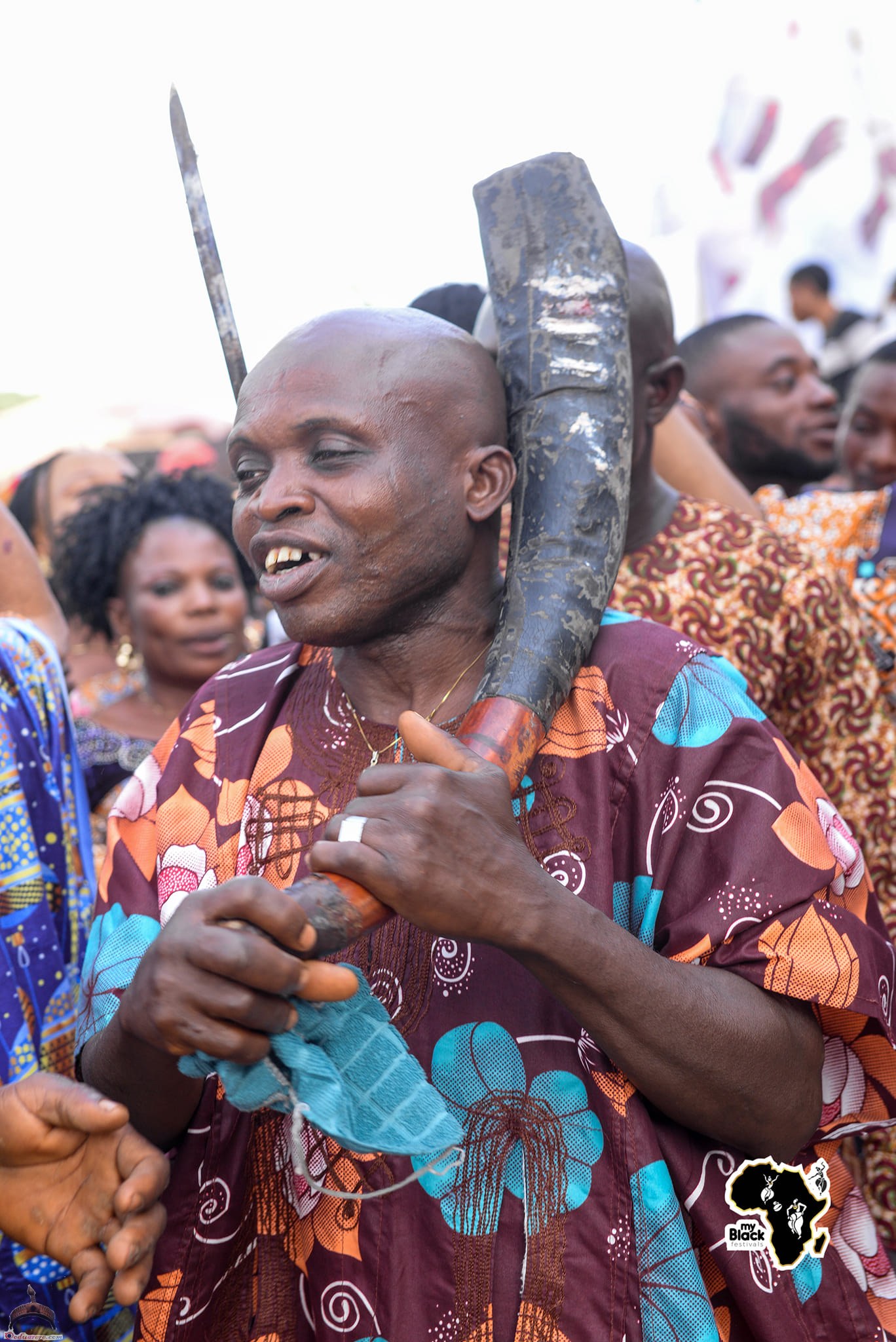
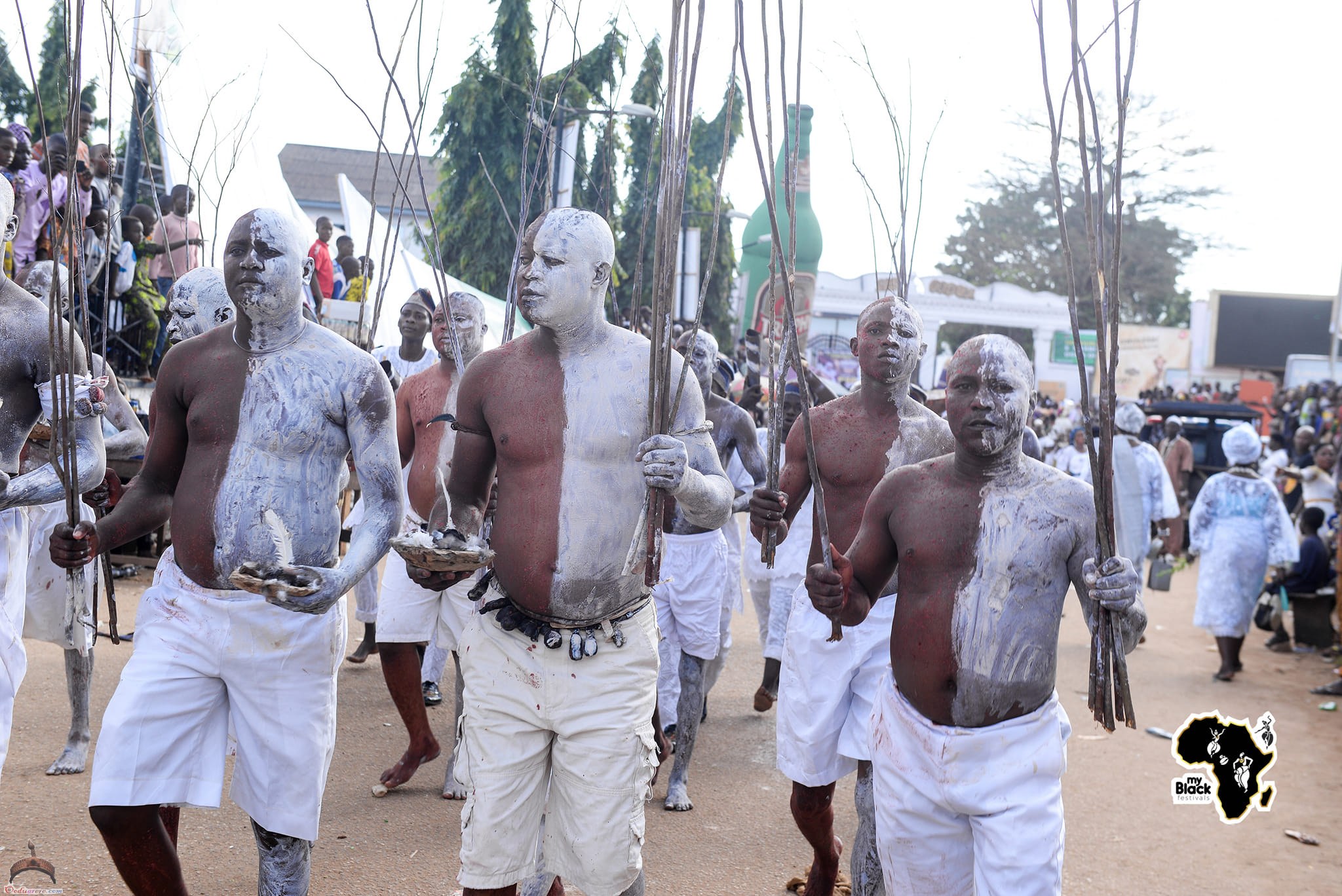
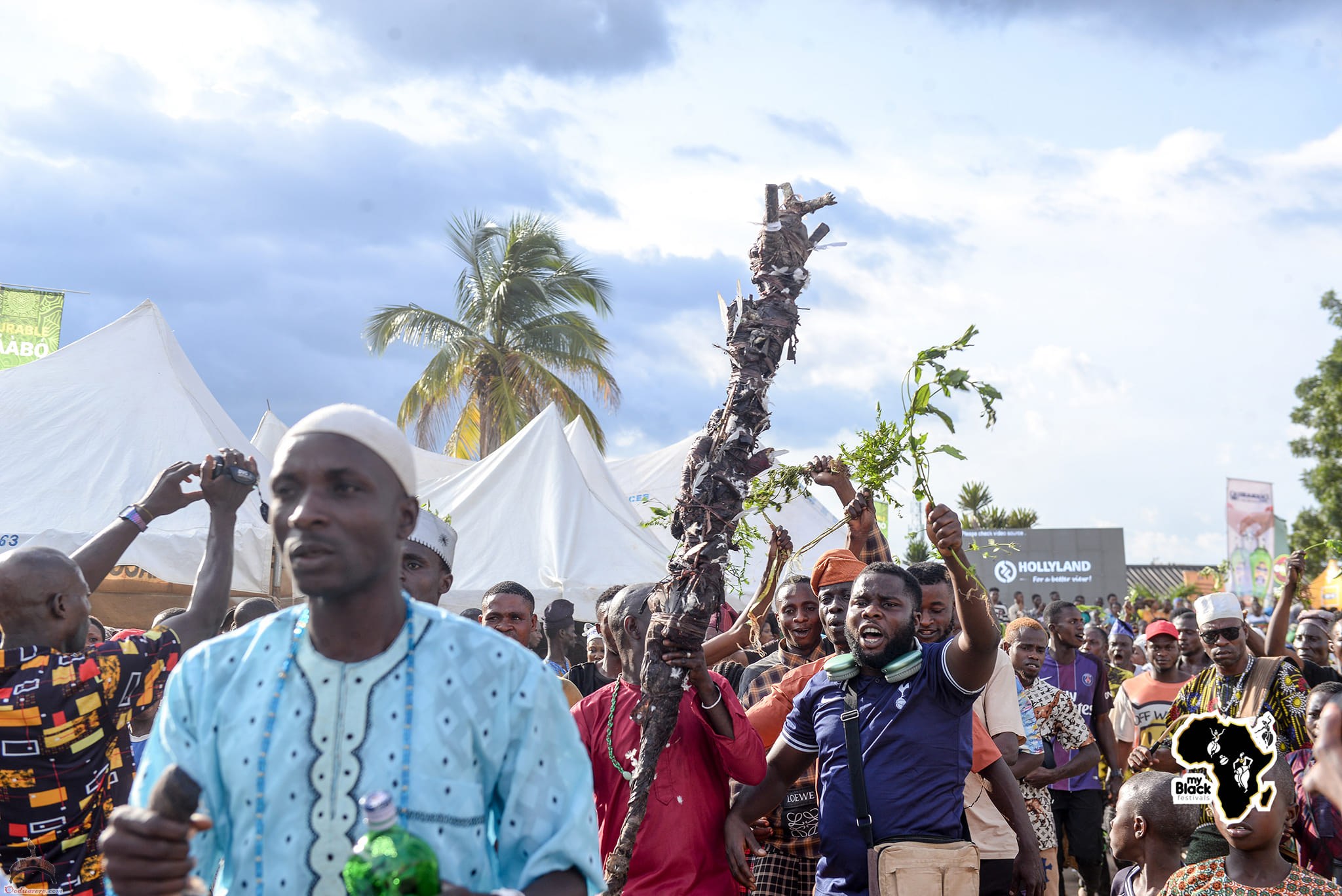
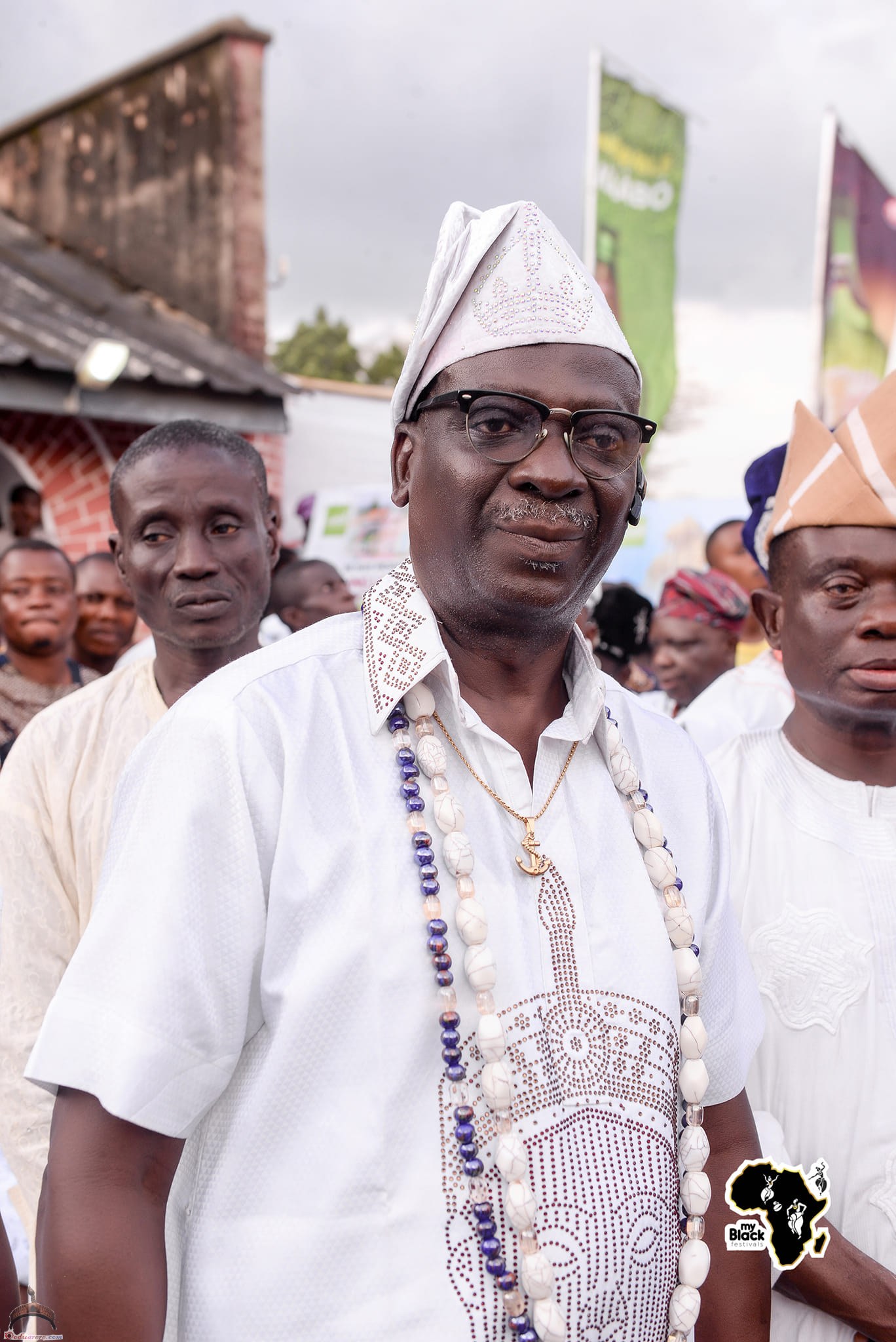
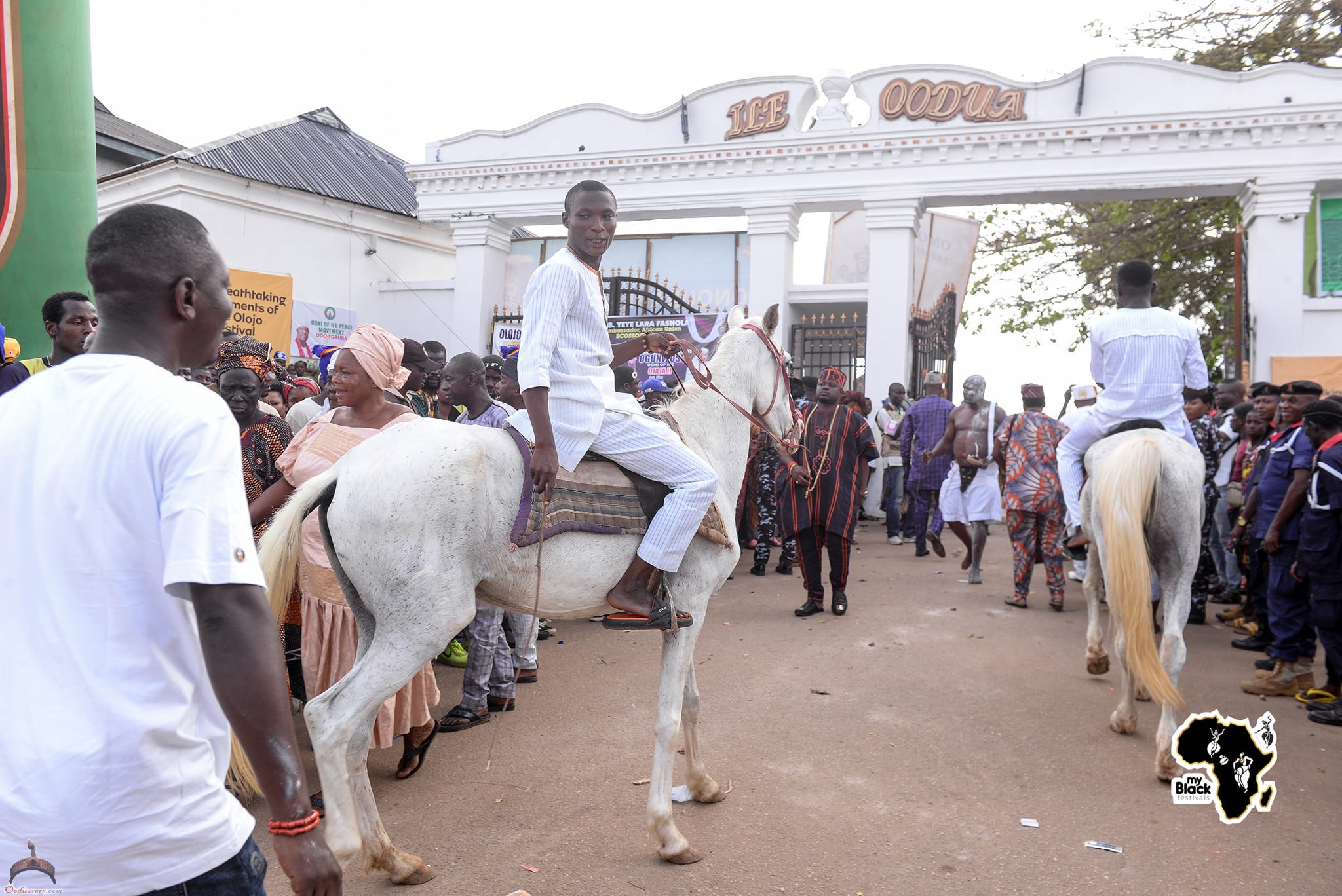
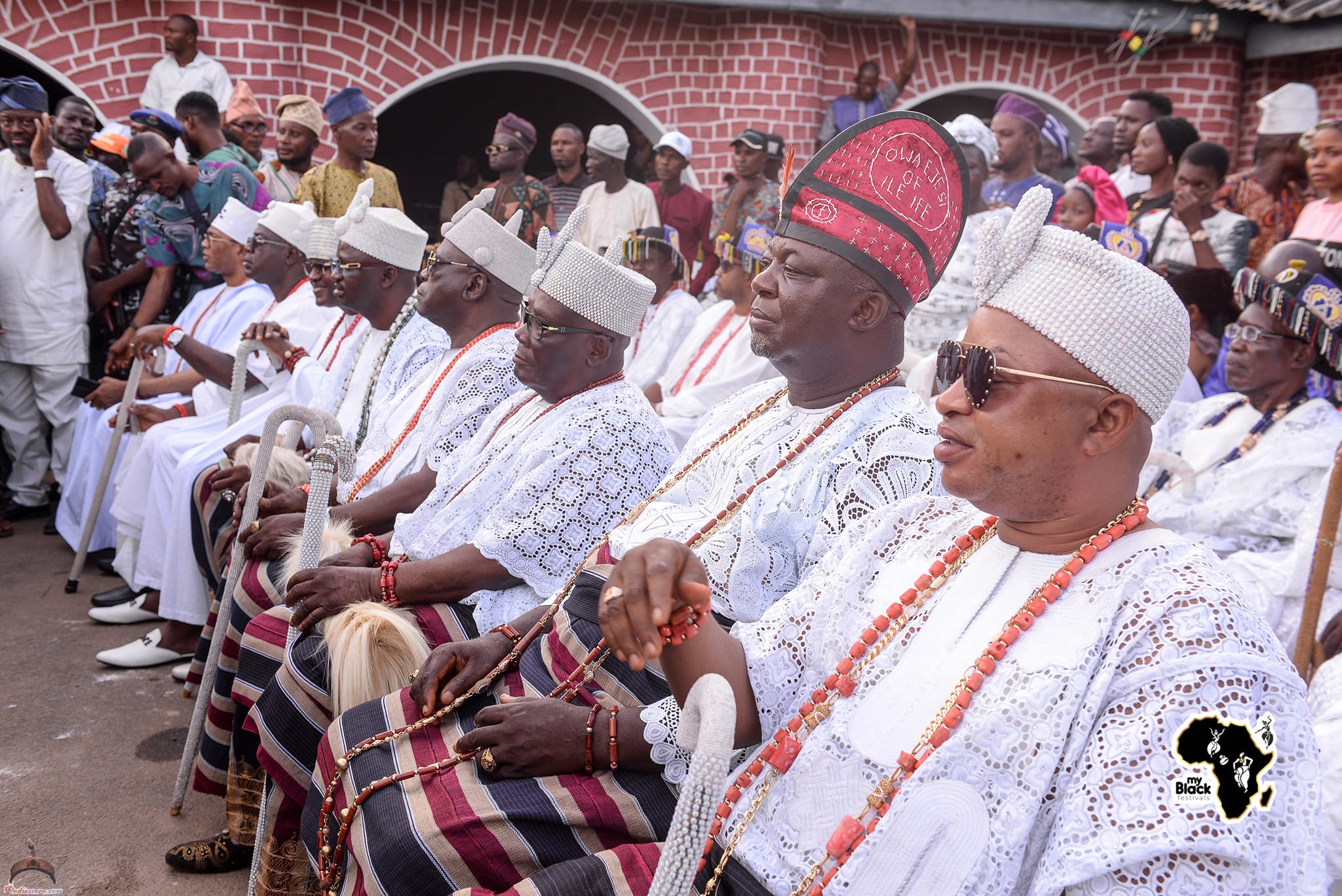
CULTURAL SIGNIFICANCE OF THE OLOJO FESTIVAL
Regarded as the most important and celebrated ceremony in Ile-Ife, the ‘Olojo’ festival marks the climax of a series of cultural and traditional events involving spiritual cleansing and purification, meditation and prayers, conservation and transformation into a mystical conception of deity in human form i.e ‘Orisa’, a status the Ooni instantly assumes after donning the ‘Aare’ crown. ‘Aare’ represents a visible symbol of authority of the Ooni and the unity of Ife as the cradle, holy city and source of the Yoruba race. It is believed to possess some supernatural power. Thus its presence among the people facilitates answers to their prayers.
This festival of grandeur is a flashback and vision from a historical transfer of reign in human history dedicated to the worship of ‘Ogun’ widely believed to have led the 201 deities on their descent from heaven hence, the appellation, ‘Pathfinder’. As such, the Ogun festival is being celebrated throughout Yoruba land and amongst Yoruba descents worldwide.
Olojo festival also re-enacts the historic fight between Oduduwa and Obatala won by Oduduwa. This is exhibited in ‘Ereja’ (mock fight) between Ooni and Osogun in which Ooni usually wins. It is also the recapitulation of the birth and contrasting complexion of Odede Oranmiyan during his lifetime. This is depicted by the ‘Lokoloko’ who shaves and paints one side of their heads and bodies with ‘Efun’ (white chalk) and ‘Osun’ (camwood)’.
Above all, the interpretative message of the Olojo festival is peace to all nations, unity among all ethnic groups, and love for all.
While evoking emotional and historical memories of the past, when Ogun and other ‘Orisa’ (Elders) arrived Ile-Ife to establish the first Yoruba Kingdom after consolidating their existence in Ile-Ife and their spread to found other Yoruba Kingdoms, the celebration of Olojo demonstrate that the substance of African tradition remains the same even in the face of changing situations.


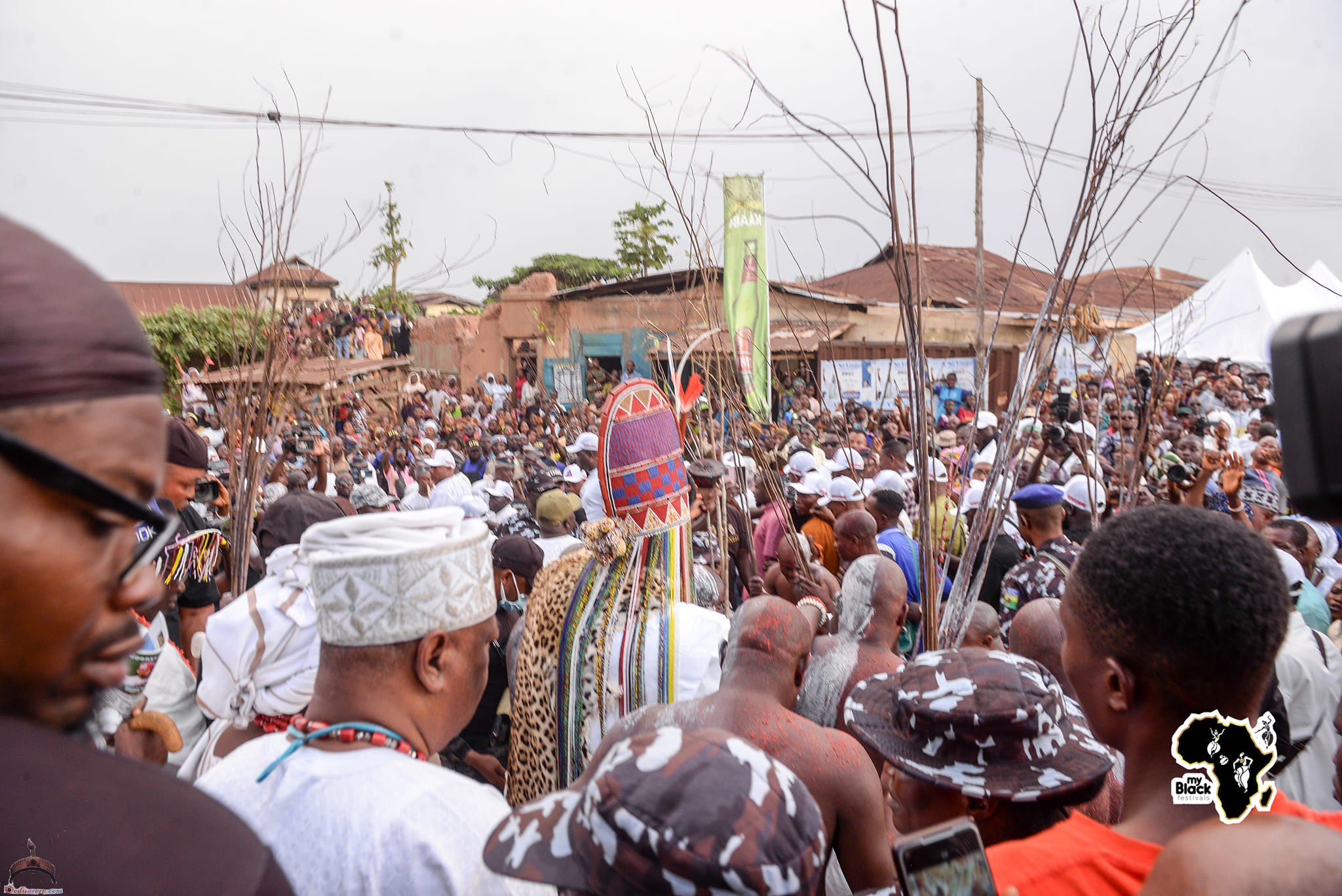
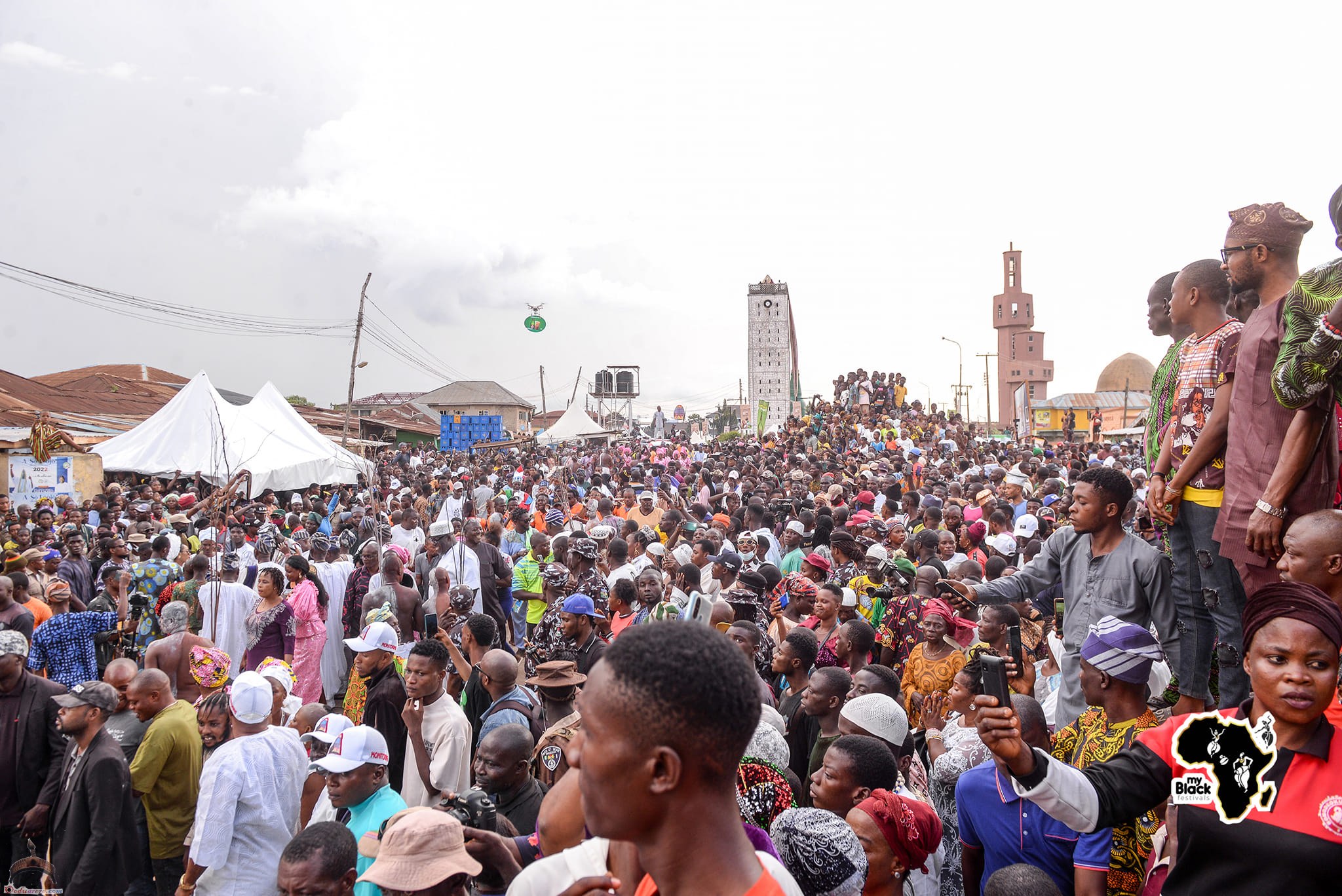
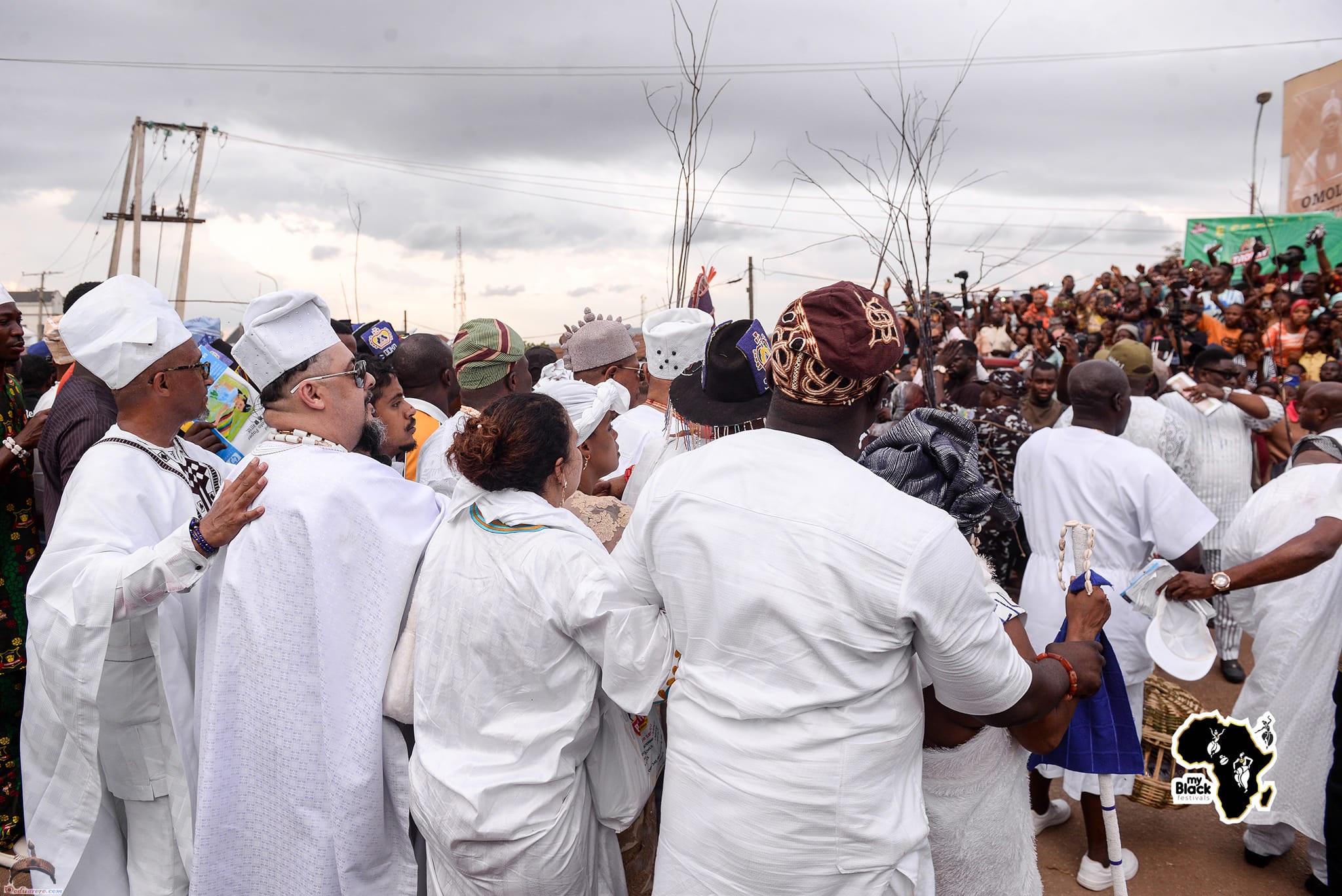
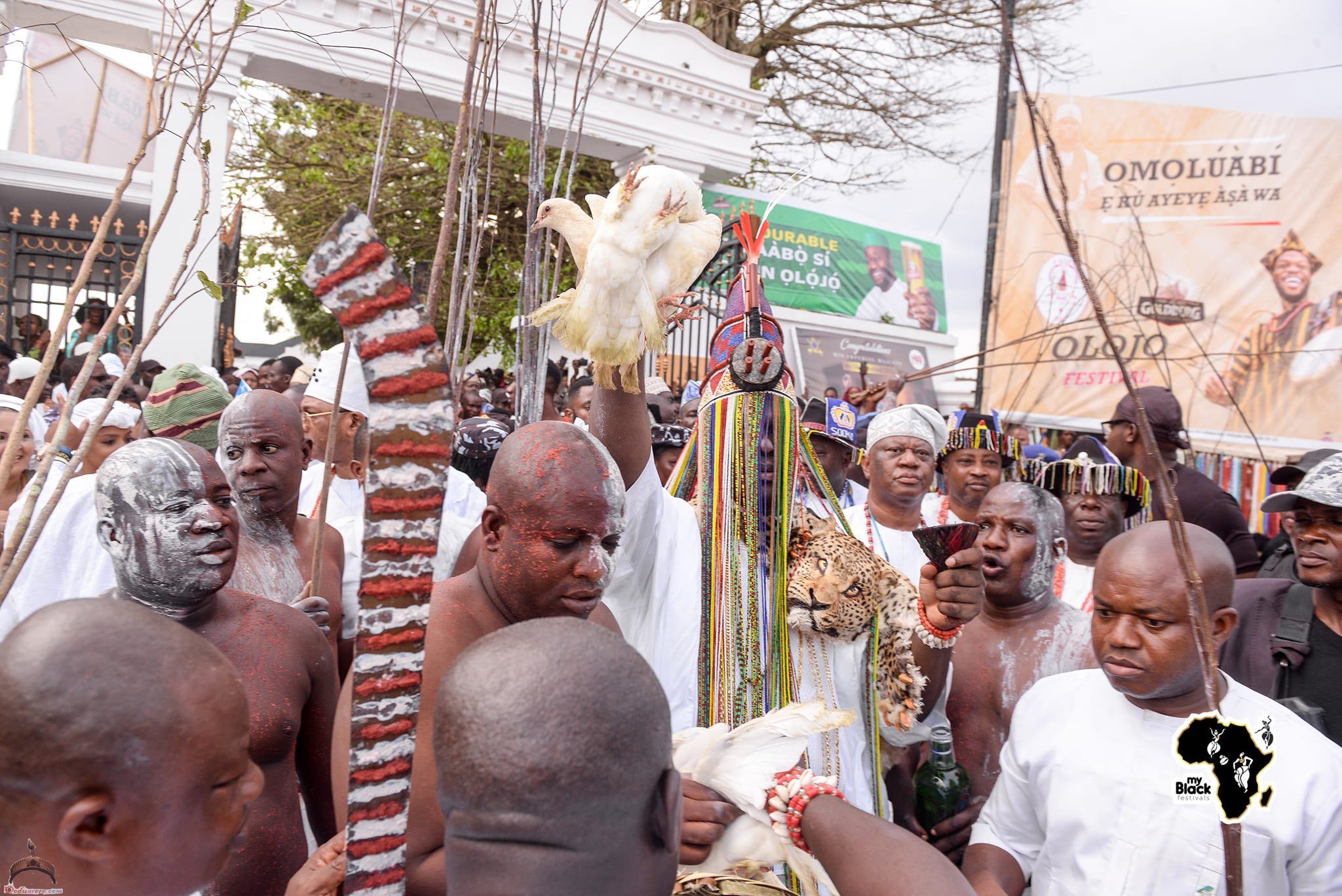
 Ọmọ Oòduà Naija Gist | News From Nigeria | Entertainment gist Nigeria|Networking|News.. Visit for Nigeria breaking news , Nigerian Movies , Naija music , Jobs In Nigeria , Naija News , Nollywood, Gist and more
Ọmọ Oòduà Naija Gist | News From Nigeria | Entertainment gist Nigeria|Networking|News.. Visit for Nigeria breaking news , Nigerian Movies , Naija music , Jobs In Nigeria , Naija News , Nollywood, Gist and more

